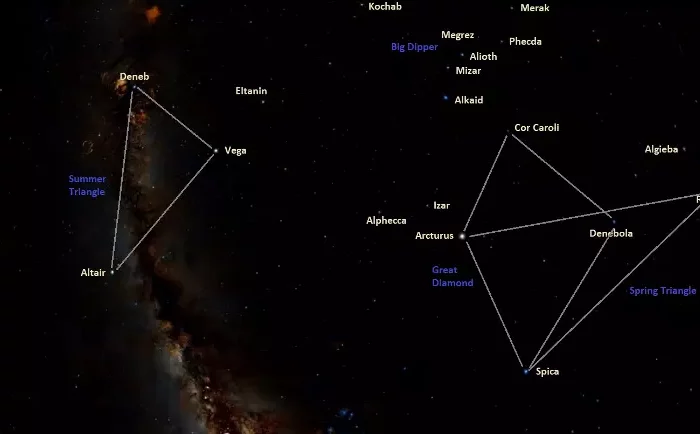The constellation Kiel or Carinae can be found in the Southern sky in the second quadrant, covering an area of 494.2 square degrees. It is comprised of various groups of stars that are easily distinguishable due to their cross-like formations, as well as captivating nebulae and galaxies that radiate cosmic beauty. Among the largest of these celestial objects are the Southern Pleiades and the Diamond Cluster. The brightest star in Carina is known as Canopus, which ranks as the second brightest star after Sirius. Additionally, two meteor streams, Alpha Carinidae and Eta Carinidae, can be observed within this constellation.
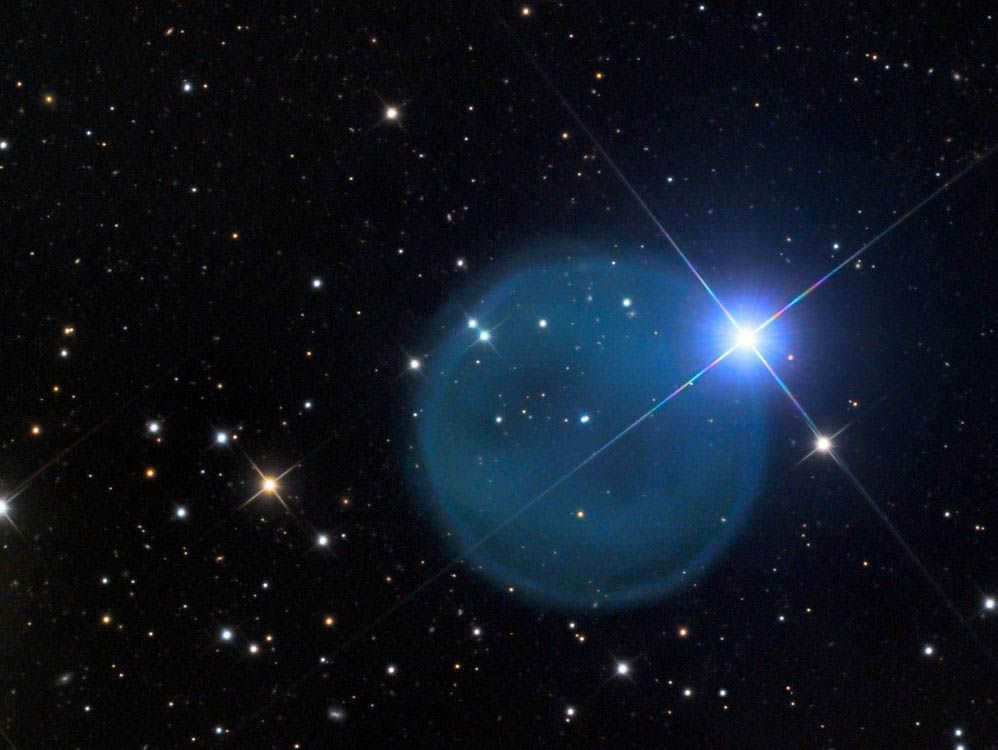
Constellation’s Background
The constellation Kiel was originally a part of the larger constellation known as the Ship of Argo, which was included in the astronomical catalog compiled by Ptolemy. Its name is derived from the mythical tale of Captain Jason and his ship Argo, as told in ancient epics. According to the legend, the gods of Olympus aided in the construction of the ship.
Jason, along with his crew of 50 Argonauts, embarked on numerous adventures during their journey and ultimately dedicated the ship to Poseidon, the god of the sea, upon its completion. This act of dedication led to the ship’s ascension to the heavens and its subsequent transformation into the constellation Argo.
In the 18th century, the name Argo was abolished by French astronomer Lacaille, who divided it into three smaller constellations: Kiel, Korma, and Sail.
Position in the Celestial Sphere
In order to locate the constellation in the sky, it is necessary to familiarize oneself with the region previously referred to as the Argo Navis. Positioned in the lower section of the celestial sphere, precisely at the 37th parallel, one can observe the luminous Canopus star.
Another method of finding Kiel is by identifying the asterisms that compose the Diamond and False Cross. These clusters exhibit a rhombus-like configuration, resembling ordinary geometric figures.
The Homunculus Nebula
With a two-lobed shape, the Homunculus Nebula encircles the exploded star Eta Carinae. It first became observable in the early 19th century and has a polar diameter of 0.7 light-years. Recent theories propose the existence of a small bipolar nebula at its core, which has been named the Little Homunculus.
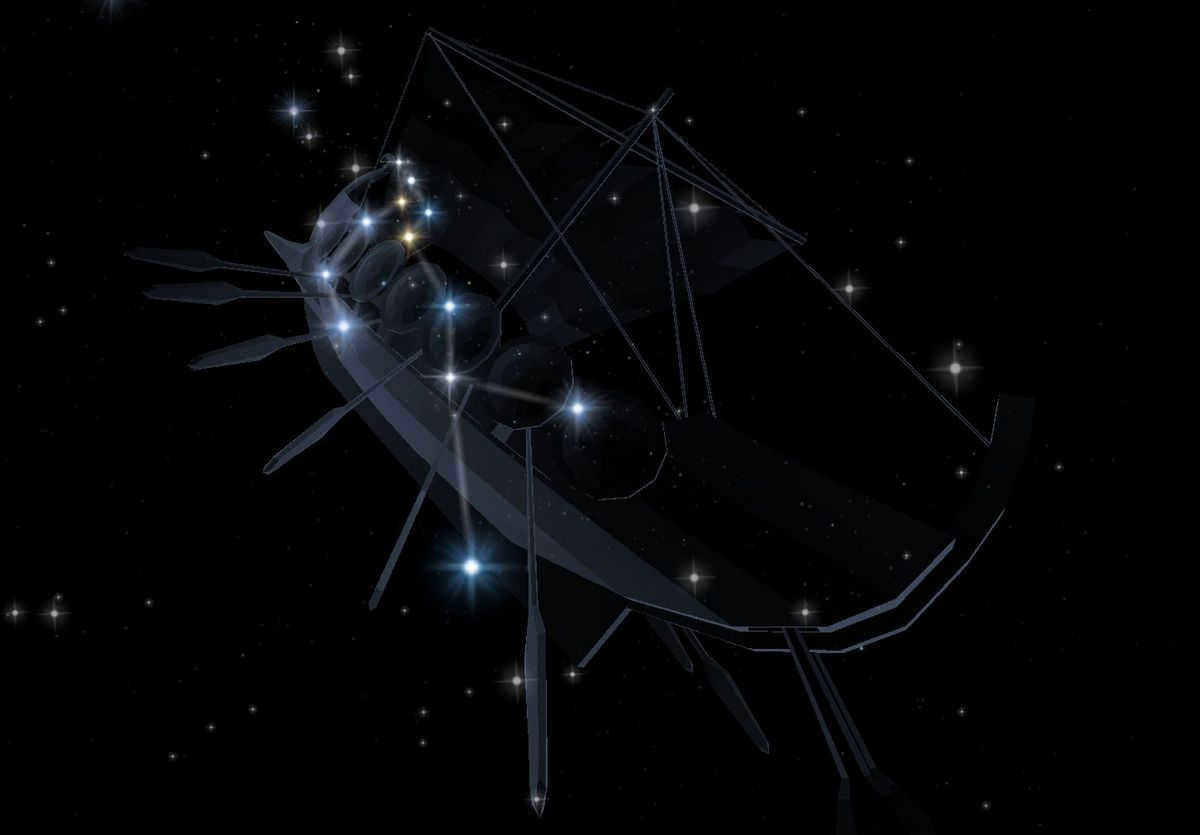
Due to its gas-dynamically unstable nature, the nebula undergoes constant transformations, resulting in an ever-changing appearance. With a diameter of more than 50 light-years, this diffuse cluster of gases is among the largest in the Milky Way galaxy.
Clusters of Stars in Constellations
These are groups of stars that can be seen together and are given a specific name. In the city of Kiel, there are two star clusters that have been observed:
- The Diamond Cross – consists of four bright objects that, when seen in the sky, form a nearly perfect rhombus shape.
- The False Cross – located more towards the South, the stars in this cluster shine with varying brightness.
Both of these clusters have a similar structure to the Southern Cross, which has often caused navigational errors for sailors on the seas and oceans.
The Kiel constellation is made up of 206 stars that are visible to the naked eye. The most prominent stars in this constellation are Canopus (α Car), Miaplacidus (β Car), and Avior (ε Car).
About Canopus
Canopus is the brightest star in the Carina constellation. It has an apparent magnitude of -0.72, while Sirius has a magnitude of -1.46. Canopus can only be observed in the Northern Hemisphere south of 37° north latitude. It cannot be seen in Russia, but can be easily viewed from Greece, India, Mexico, Turkmenistan (specifically the city of Kushki), or Egypt, where it is visible near the horizon line. In the Southern Hemisphere, Canopus is always visible in the sky and never dips below the horizon line. It can be observed in Australia, New Zealand, Chile, and Argentina without ever setting.
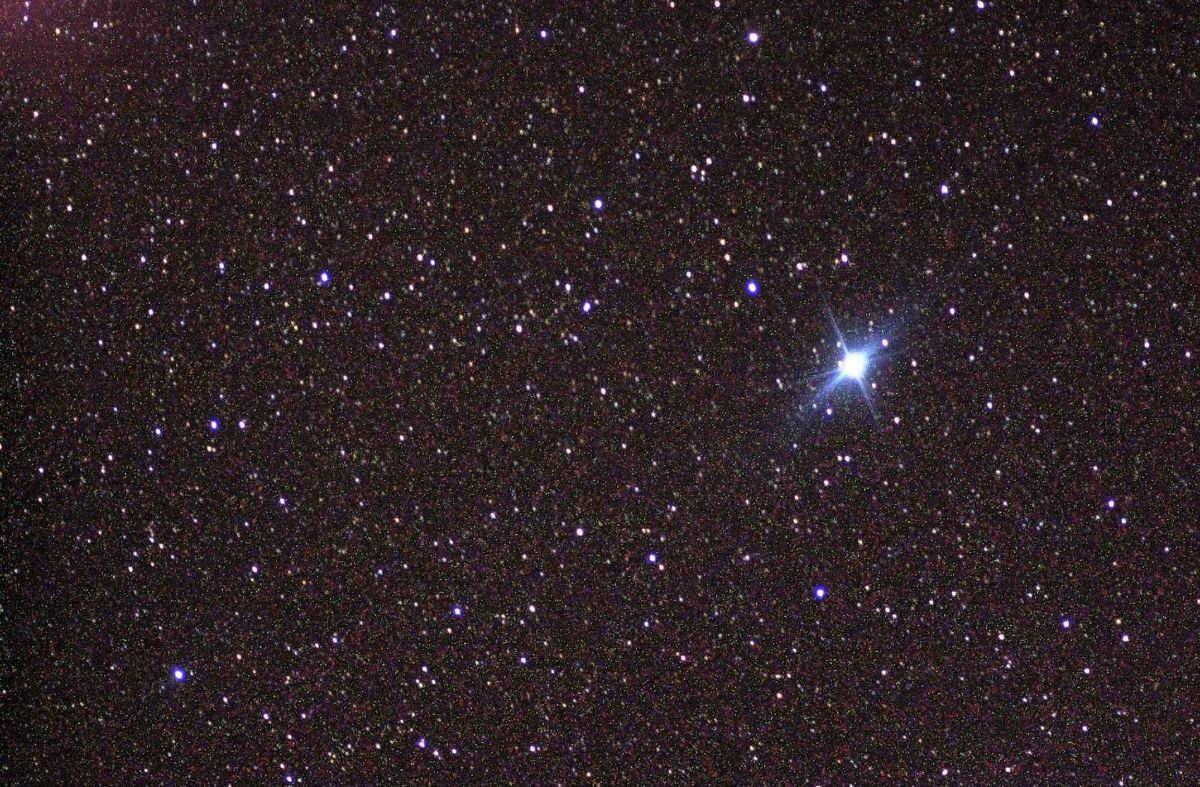
Canopus, a celestial body known for its brilliance, possesses a mass that is 8-9 times greater than that of the Sun and is an astounding 65 times larger in size. Situated approximately 310 light years away from our solar system, this information was acquired through the utilization of the Hipparcos satellite.
Regarded as a notable geographic reference point in the Northern Hemisphere, akin to Polaris, Canopus has long played a vital role in Soviet and Russian cosmonautics by serving as a reliable celestial guide.
Miaplacidus
A massive celestial body belonging to Class A, Miaplacidus is situated approximately 111 light-years away from our planet. The name of this star, when translated, signifies “serene waters”. This astronomical entity is officially known as Beta Kiel and is the second most luminous star in its system, boasting a visible magnitude of +1.68. In certain regions, Miaplacidus is symbolically linked to the earthly element as well as the influences of the Moon and Saturn.
Turais
Aspidiske or Turais is a celestial body that shines brightly in the sky. It was named after the shield that was used to protect the ancient Greek ships. Here are its main features:
- It has an apparent luster of +2.21;
- It belongs to the spectral class A8;
- It is located approximately 700 light years away from Earth.
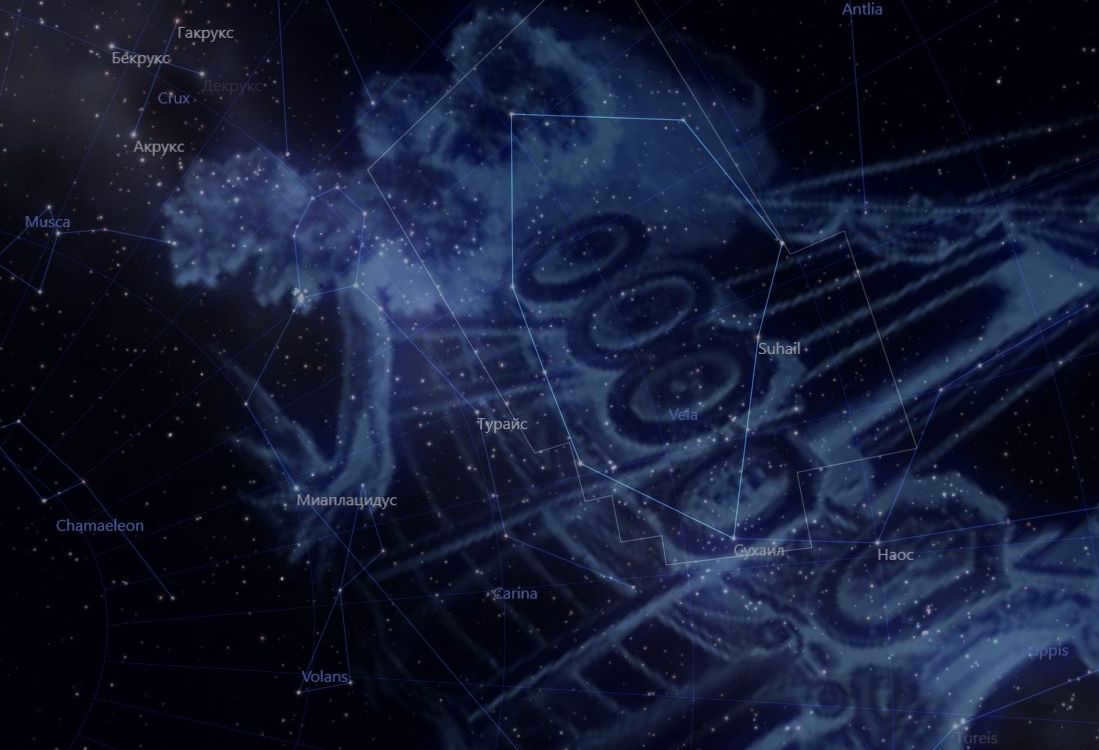
Astronomers have hypothesized that in 6,000 years, as a result of the axial shift of our planet, Thurais will assume the role of the new Southern Cross.
Avior
Epsilon Kiel is also known as Avior. This name was bestowed upon it in the 1930s by the British Air Force. It is the second brightest star in the constellation and exhibits a dual structure:
- The first component is an orange giant classified as KO III, currently in the late stages of its life cycle;
- The second component is a super-hot B2V star.
Both components periodically outshine each other, causing slight fluctuations in their overall brightness. These changes are observable even through telescopes from Earth.
This particular one
Located approximately 7,000 to 8,000 miles away from Earth, Eta Kiel is a star that is millions of light-years distant and shines 4 million times brighter than the Sun. In ancient China, it was given the name Jie She, which translates to “heavenly altar”. The star was first discovered by Edmund Halley in 1677.
Since its discovery, Eta Kiel has undergone significant changes. In 1730, it experienced a period of increased brightness, but 50 years later, it dimmed once again. The star was last observed in a bright glow in 1843, but over the course of 25 years, it gradually dimmed until it completely vanished from the night sky in 1870. Following the explosion, there was a noticeable periodic fluctuation in its brightness for a period of time.
Scientists now believe that Eta Kiel is not a solitary star, but rather a binary system consisting of two luminous bodies. The larger of the two is approximately 150 times the mass of the Sun, while the smaller one is five times smaller in comparison. The explosion of Eta Kiel resulted in the release of both energy and matter, leading to the formation of the Homunculus Nebula that surrounds the star.
Astronomers have made a forecast regarding the future of Eta Kiel, stating that it is expected to undergo a supernova explosion in the coming years.
However, there are speculations suggesting that this event might occur earlier than anticipated, allowing humanity to witness this magnificent spectacle.
The potential consequences of such an explosion have even been calculated. It is believed that the Earth’s ozone layer will shield it from the harmful effects of magnetic radiation and gamma rays. The only potential issue could be the impact on orbital stations and satellites in orbit.
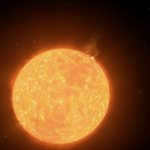
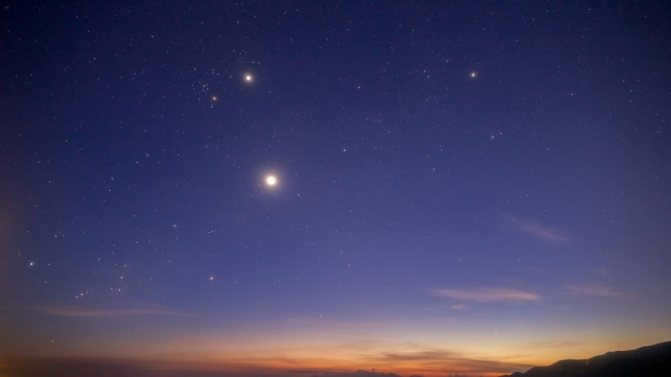

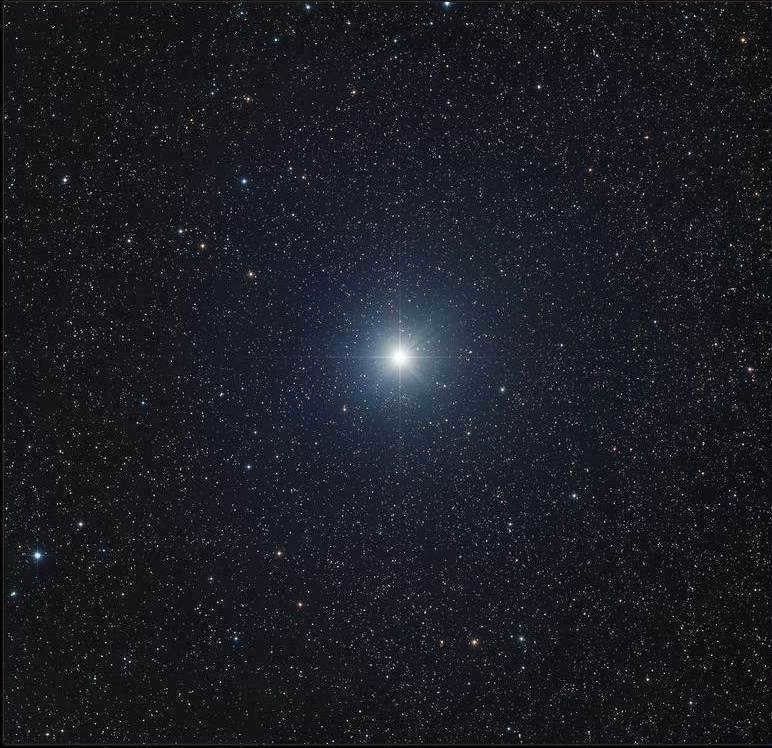
Alpha Volopas, also known as Arcturus, takes the fourth spot on the list. This orange giant has a mass equal to that of our Sun, but its brightness is 100 times greater. It would take us approximately 36 light-years to reach Arcturus.
In Russia, the Alpha Volopasa is observed throughout all 12 months. It is simply required to mentally connect three bright points, representing the handle of the Big Dipper. One of these points is Arcturus.
In ancient Greek, the name Arcturus means “guardian of the bear.” According to Greek mythology, Arcturus is said to protect Callisto, a nymph who was transformed into a bear by Hera and is the mother of Zeus.
Capella (α of Ascendant)
can be restated as
Capella (α of Ascendant)
is another way to express this.
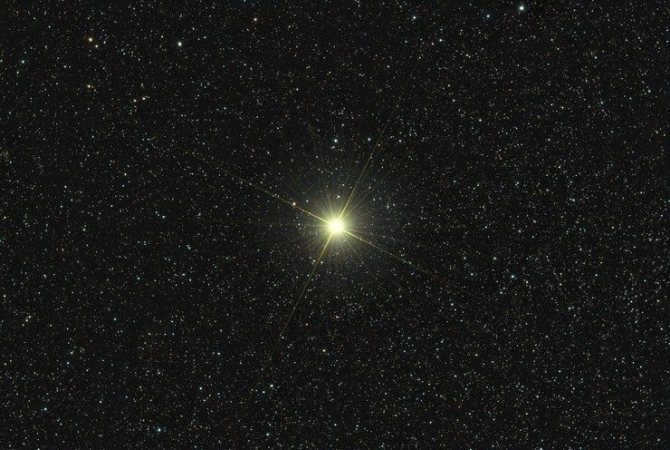
This is the sixth star in our star rating. In the Northern Hemisphere, it is the third brightest. Visually, Capella is located on the shoulder of the charioteer figure in the constellation with the same name. In astronomical atlases, it is referred to as Alpha of the Ascendant. What sets it apart is that Capella is also a binary star. Two yellow giants orbiting around each other at a distance of 100 million kilometers. Their combined mass is 2.5 times that of the sun.
Traveling to this star would take approximately 42 light years.
What is the method to locate Polaris?
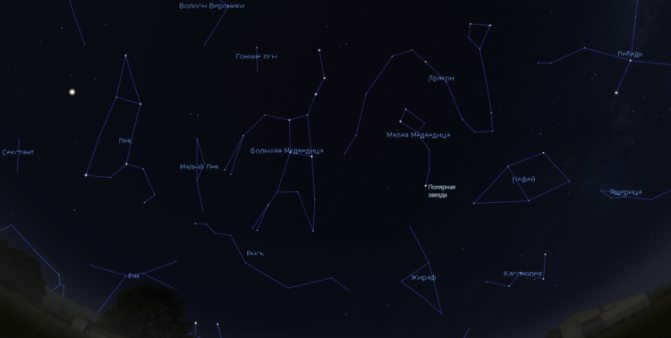
The bright star known as Polaris, or Stella Polaris, is located within the Ursa Minor constellation, also known as the Little Bear. The seven stars that make up the Big Dipper constellation are sometimes referred to as the Little Bucket. Polaris can be found at the end of the Big Dipper’s “handle”. It is surrounded by faint stars, with the four dimmest only visible on clear, moonless nights with minimal light pollution.
To locate Polaris, you can use the stars Dubhe and Merak from the Big Dipper constellation. Visualize a line connecting these two stars and extend it five times – Polaris will be located somewhere along this line.
Observing the stars of the Big Dipper can be quite amusing: their “buckets” face each other, while their “handles” point in different directions. The Big Ladle shines brighter and resembles a frying pan with a long handle, while the Small Ladle appears dull and ladle-like.
However, there are times when searching for constellations becomes challenging. Trees may obstruct part of the sky, clouds may be scattered unevenly, or the stars may not form recognizable patterns due to lack of experience. In such cases, technological tools come to the rescue in locating Polaris.
If you happen to have a camera on hand – preferably the popular “SLR” – then capturing Polaris is within your reach. I’m sure many of you have come across photos of the night sky, taken with a slow shutter speed, where the moving stars leave behind radiant trails. The length of these trails indicates the distance the star has traveled. Given that Polaris is situated at the axis of the celestial sphere and remains relatively stationary, the resulting image will showcase a unique pattern – concentric circles formed by the trails of all the stars, with the smallest and shortest circle representing Polaris’ path.
If you lack a suitable camera, you can utilize specialized applications designed for mobile phones. For Android devices, there is the Stellarium app, while for iOS, there is the Sky Guide app. Additionally, there are a plethora of similar alternatives available. These apps can assist you in recognizing constellations in the sky by utilizing your smartphone’s camera or by calculating their positions based on specific location, season, and time of day. This feature is particularly advantageous since, despite enhancing the camera’s capabilities, these programs often encounter technical limitations that prevent them from “seeing” the stars.
Videos
Also check out: Northern Hemisphere Constellations: Names, Photos. The Brightest Constellation in the Northern Hemisphere
Aldebaran
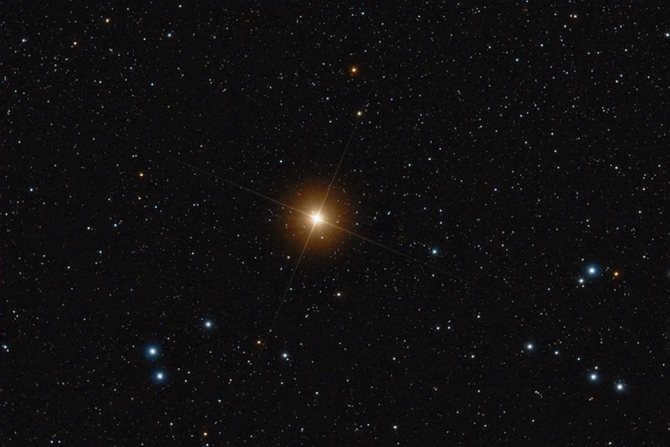
Distance from Earth: 65.3 light-years. Visible magnitude: +0.86. Current stage of evolution: Red giant.
Aldebaran, also known as Alpha Taurus, is the brightest star in the Taurus constellation. It is a red giant belonging to the K spectral class, having transitioned from its main-sequence phase after the depletion of hydrogen in its core.
According to the current stellar evolution model, Aldebaran has a luminosity approximately 425 times that of the Sun (despite being only 50 percent more massive than the Sun).
Pioneer 10, one of NASA’s oldest and farthest space probes, is on a trajectory towards Aldebaran and is expected to reach it in approximately two million years.
Notable celestial bodies
The star cluster known as Kiel consists of 206 prominent celestial bodies that are visible to the naked eye. The most prominent stars within this constellation are Canopus (α Car), Miaplacidus (β Car), and Avior (ε Car).
Canopus
Canopus is the alpha star within the Carina constellation. It has an apparent magnitude of -0.72, which is slightly fainter than Sirius (-1.46). Canopus can be observed in the Northern Hemisphere, but only south of 37 degrees north latitude. Unfortunately, it cannot be seen in Russia. However, it can be conveniently observed from locations such as Greece, India, Mexico, Turkmenistan (specifically in the city of Kushki), or Egypt, where it is situated near the horizon line. In the Southern Hemisphere, Canopus is always visible in the sky and never dips below the horizon. In countries like Australia, New Zealand, Chile, and Argentina, Canopus remains visible at all times.
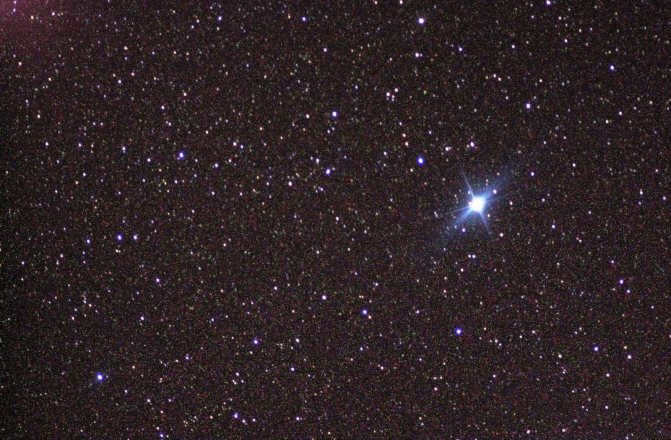
Canopus, a star in the Northern Hemisphere, is known for its brilliant yellowish-white color. It is classified as a supergiant and is approximately 8-9 times more massive than the sun, with a size that is 65 times larger. Located 310 light-years away from our solar system, its precise measurements were determined using data from the Hipparcos satellite.
Canopus holds significant importance in the field of Soviet and Russian cosmonautics, serving as a vital tool for astronomical navigation. It is considered a geographic landmark in the Northern Hemisphere, similar to Polaris.
Miaplacidus
Known as a Class A giant, Miaplacidus is positioned at a distance of 111 light-years away from our planet. Its name, when translated, signifies “quiet waters”. Identified by its scientific name Beta Kiel, Miaplacidus is the second most luminous star in its system, boasting a visible magnitude of +1.68. In certain regions, it is associated with the element Earth, as well as the celestial influences of the Moon and Saturn.
Turais
Among the stars that shine the brightest in the sky, Turais stands out. It was historically known as Aspidiske or Turais, a name derived from the protective shield that ancient Greek ships used. Here are its key features:
- Apparent brightness of +2.21
- Spectral class A8
- Located approximately 700 light years away from Earth
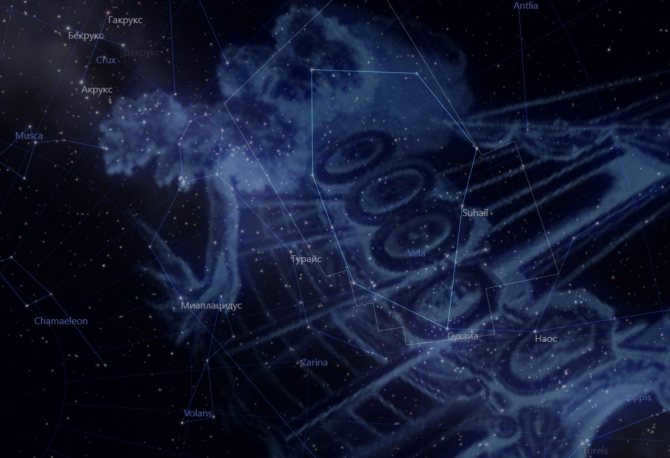
Turais, located in the constellation of Kiel, is a prominent star. Credit: ruprograms.ru
Astronomers have posited that in approximately 6,000 years, Turais will assume the position of the new Southern Cross as a result of the Earth’s axial shift.
Avior
Epsilon Kiel, also known as Avior, was named in the 1930s by the British Air Force. It is the second brightest star in the constellation and exhibits a binary structure:
Read also: Polaris. Which constellation is it in? Stars ContentsNameGeneral characterizationExact distance to EarthStellar system structure of PolarisDescriptionLife of a supergiantInterchangeable starParticularities
- 1 element – an orange giant of class KO III, in the advanced stage of its life cycle;
- 2 element – a superhot star with a B2V classification.
At different points, both components outshine one another, resulting in a slight decrease in brightness. These variations are observable even with a telescope from Earth.
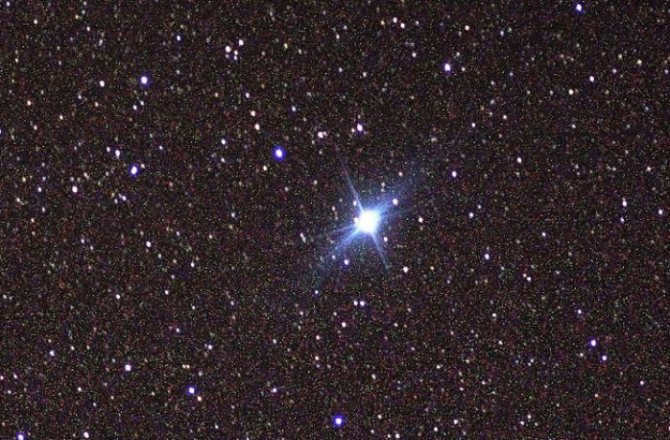
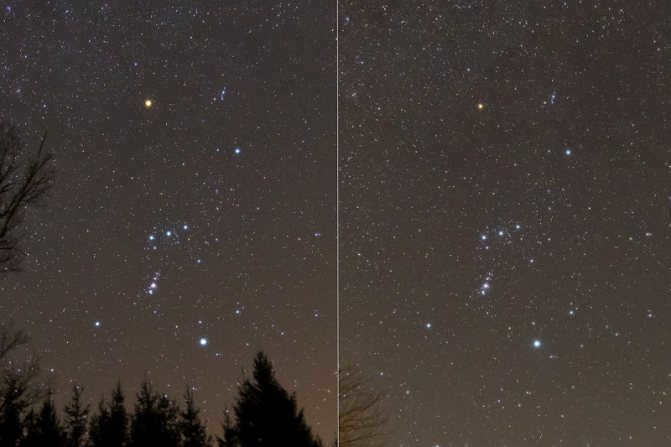
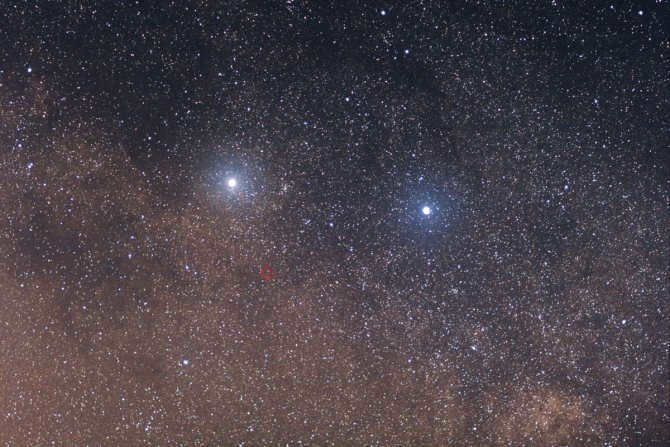
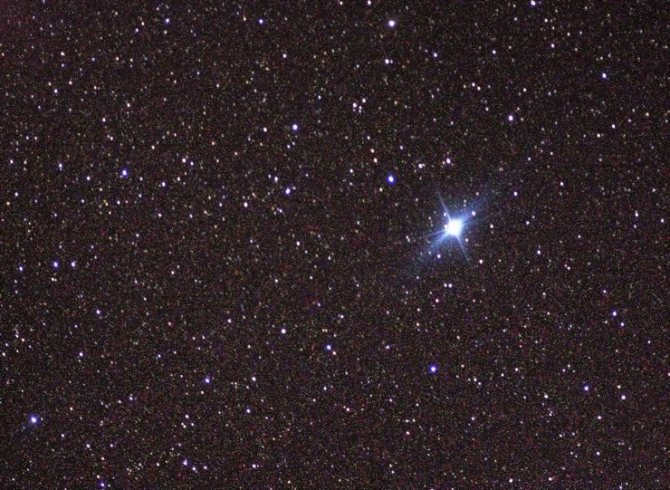
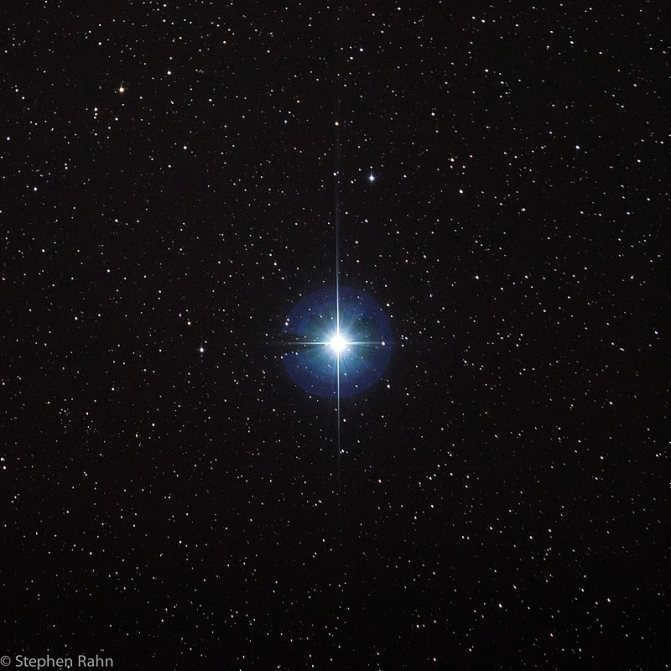
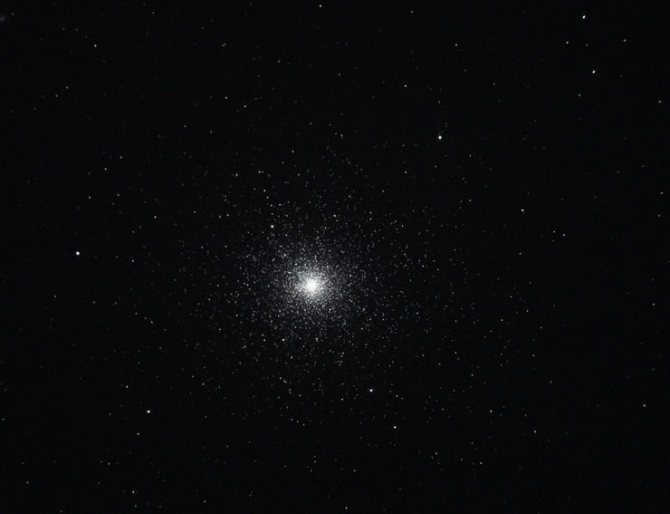
Alpha Eridana is the name given by astronomers to this celestial object. It is a blue star that is extremely hot and holds the ninth position on our list of the brightest stars. Located at the southern end of the Eridanus constellation, Ahernar is a double star. Its shape is similar to that of a flattened sphere, resembling an egg, and it has a mass equivalent to 8 times that of our Sun. The brightness of Alpha Eridanus is a thousand times greater than that of our Sun. The star acquired its spherical shape due to its remarkably high rotational speed.
The constellation Eridanus is named after the renowned Phaeton, who was the son of the god Helios. Legend has it that Phaeton’s chariot journeyed along the path of Eridanus. The voyage to Ahernar would take approximately 140 light years, which means it is unlikely to happen within our lifetime.
Procyon
Procyon, situated in the Lesser Dog constellation, is a prominent star that shines brightly in the Northern Hemisphere. With a size slightly larger than the Sun and a brightness 7.5 times greater, Procyon stands out among other celestial bodies. Its relatively close proximity to Earth, at a distance of 11.42 light years, allows for excellent observation opportunities. Comprised of two celestial bodies, including a luminous main subgiant and a white dwarf, Procyon offers a fascinating spectacle. These two components are separated by a distance of 16 astronomical units. For optimum viewing conditions, winter is the ideal time to observe Procyon, as it is the most dominant object in the constellation.
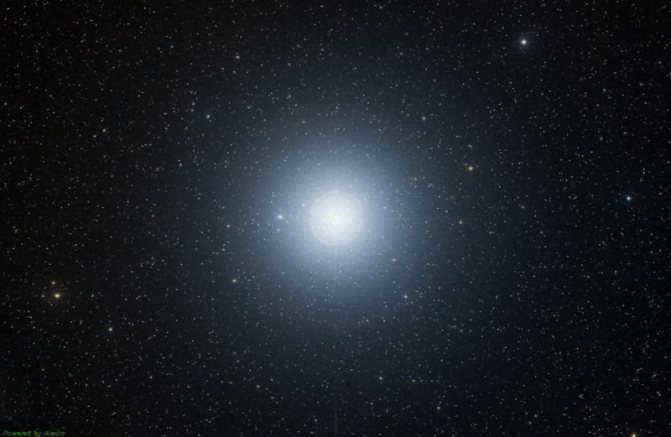
Betelgeuse (α Orionis)
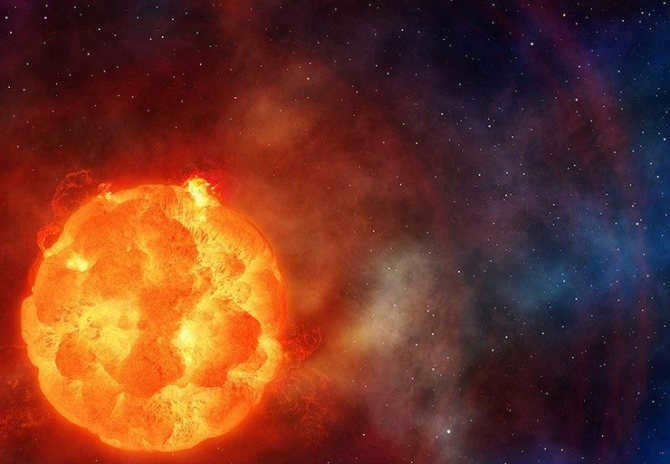
Situated 570 light-years away from Earth, Betelgeuse, also known as Alpha Orion, holds the position of the dimmest star in the night sky. Its intermittent variability is a perplexing phenomenon that has puzzled astronomers for decades. The star has experienced a 15% decrease in brightness, a fact that continues to baffle scientists and spark their imaginations. Various extraordinary hypotheses have been proposed to explain the origins of Betelgeuse.
Alpha Orion is classified as a red giant, with its size during pulsation surpassing that of the sun by 500-800 times. To grasp the magnitude of this, one must envision Betelgeuse within our own solar system, where it would extend all the way to the orbit of Jupiter.
Every day, researchers are conducting studies on Betelgeuse, a star located in the Orion constellation. However, it is still premature to discuss the possibility of traveling to this distant celestial body.
Rigel A
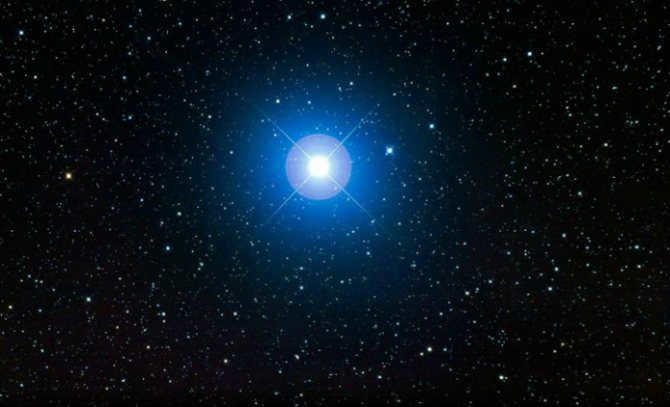
Earth Distance: 860 light years. Visible brightness: 0.13. Current stage of evolution: Blue supergiant.
Rigel, located in the constellation Orion, is the most brilliant star. Although it appears to be a single star, Rigel is actually a system consisting of at least four stars. The most prominent star in the group, Rigel A, is 120,000 times brighter than the Sun and 21 times more massive (both values vary by method). Other components include Rigel Ba and Bb, which form a double system, as well as the distant Rigel C.
Rigel is classified as an Alpha Swan variable, which is a group of variable stars that exhibit simultaneous contraction and expansion on different parts of their surfaces. Its brightness, or apparent magnitude, ranges from 0.05 to 0.18.
While Rigel typically takes the title of the brightest star in the Orion constellation, it has been known to be surpassed by the red supergiant Betelgeuse on certain occasions.
Rigel (β of Orion)

This celestial body is commonly known as the Beta of Orion. It consists of a trio of stars that combine to form a blue-white supergiant. Rigel outshines the Sun by a staggering 130,000 times, making it the most luminous star in the observable galaxy.
Beta Orion is situated approximately 870 light-years away from our planet. If Rigel were closer, it would outshine all other stars in the night sky. Remarkably, Rigel has a diameter of 103 million kilometers, which is a whopping 74 times larger than the Sun!
There are numerous legends and tales associated with this celestial object. The ancient inhabitants of Egypt identified it as the god Sah, who was revered as the patron deity of the deceased. Subsequently, Rigel became a symbol of Osiris, the principal god in the ancient Egyptian belief system.
Arcturus: the Brightest Star in the Northern Hemisphere
Arcturus, the brightest star that can be easily observed from the Northern Hemisphere of our planet, holds a special place in the night sky. Located at a distance of approximately 37 light-years, this celestial body shines with a brilliance 110 times greater than that of our Sun. What makes Arcturus truly remarkable is its visibility even during daylight hours. It was the French astronomer Jean-Baptiste Morin who first made this astonishing discovery in 1635.
Arcturus remains a prominent feature of the celestial tapestry throughout the year, visible from every corner of Russia. Its mesmerizing glow captivates observers, offering a glimpse into the vastness of the universe.
The luminosity of Arcturus exhibits a slight variation every 8.3 days, a phenomenon attributed to the pulsations occurring on its surface. This characteristic is commonly observed in many red giants, providing astronomers with valuable insight into the nature of these stellar giants. Through meticulous observations, scientists have managed to determine several key parameters of Arcturus.
- The radius of this star is about 25.7 ± 0.3 times the radius of the Sun.
- It has a surface temperature that can reach up to 4,300 K.
- The estimated mass of this star is approximately 1.98892x1030kg.
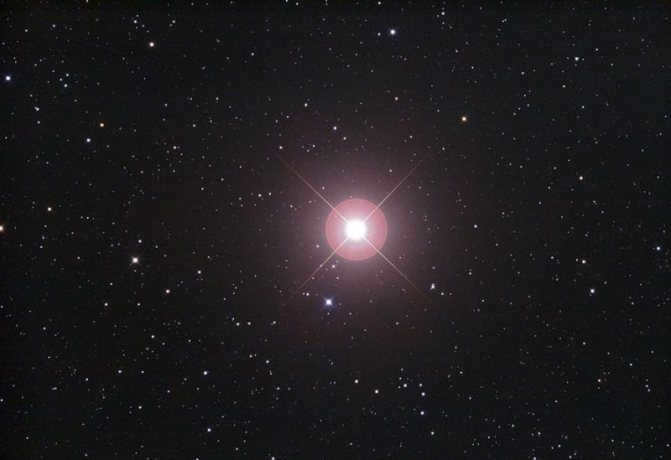
The unseen partner
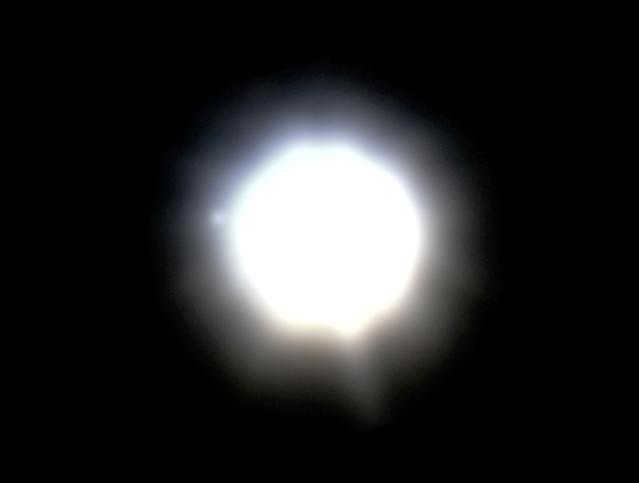
To the left of the star, Sirius B can be seen.
During the 19th century, astronomers who were studying Sirius made an interesting observation. They noticed that although its trajectory appears to be straight, it actually experiences periodic fluctuations. When viewed in the night sky, this trajectory appears as a wavy curve.
What made this observation even more remarkable was that these periodic fluctuations could be detected within a relatively short period of time, despite the fact that stars are located billions of kilometers away from us. Astronomers hypothesized that these “wiggles” were caused by an unknown object that orbits around Sirius with a period of approximately 50 years.
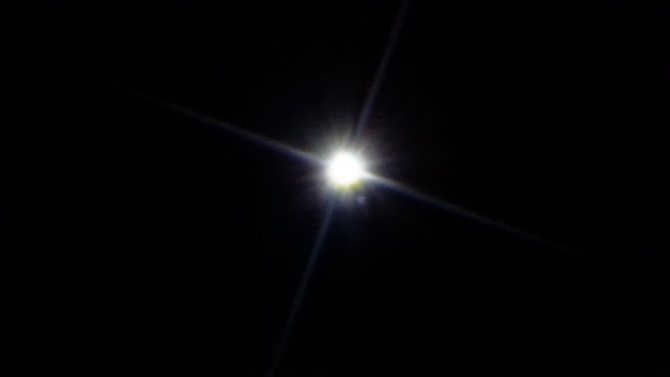
After eighteen years of making the daring assumption, it became feasible to observe a petite star near Sirius. This star possesses a stellar magnitude of 8.4 and marks the initial discovery of a white dwarf, furthermore, it is the most massive among those found so far.
Alpha Lyrae: The Brightest Star in the Constellation Lyra
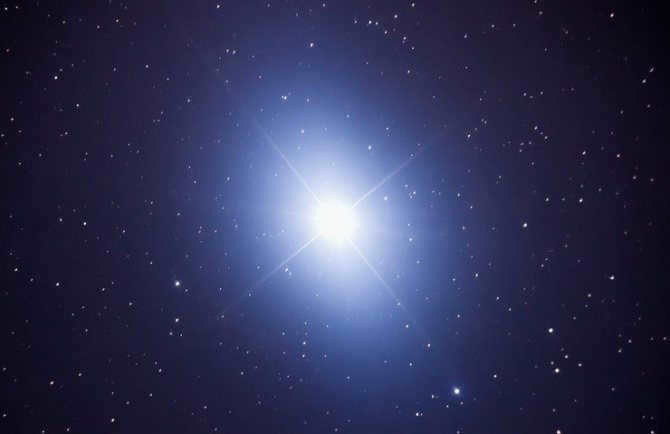
Located in the Lyra constellation, Vega is the fifth most luminous celestial object on our list. Interestingly, the photograph of Vega was captured right after the Sun. Ancient astronomers regarded Vega as the “most significant” star. It is situated 25 light years away from our solar system. The Lyra constellation has been extensively researched, surpassing any other star.
Vega stands out as the most brilliant star in the Northern Hemisphere.
Scientists have made a remarkable discovery regarding the rapid rotation speed of this star. Vega is known to be surrounded by an enigmatic dust disk.
The Assyrians gave the star the nickname “judge of the sky” because they believed it had the power to administer justice. The ancient Greeks associated Vega with the lyre, an instrument created by the god Hermes. According to legend, Apollo later gifted this lyre to Orpheus, a renowned musician and friend of Jason, the leader of the Argonauts.
Astrologers believe that Vega is one of the 15 stars that have the greatest impact on human fate.
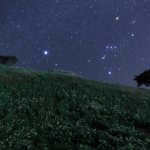
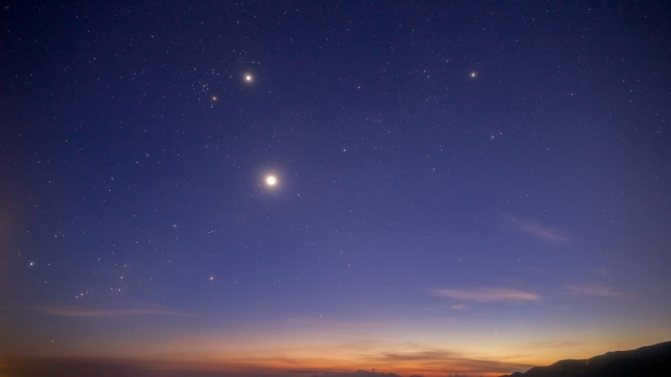

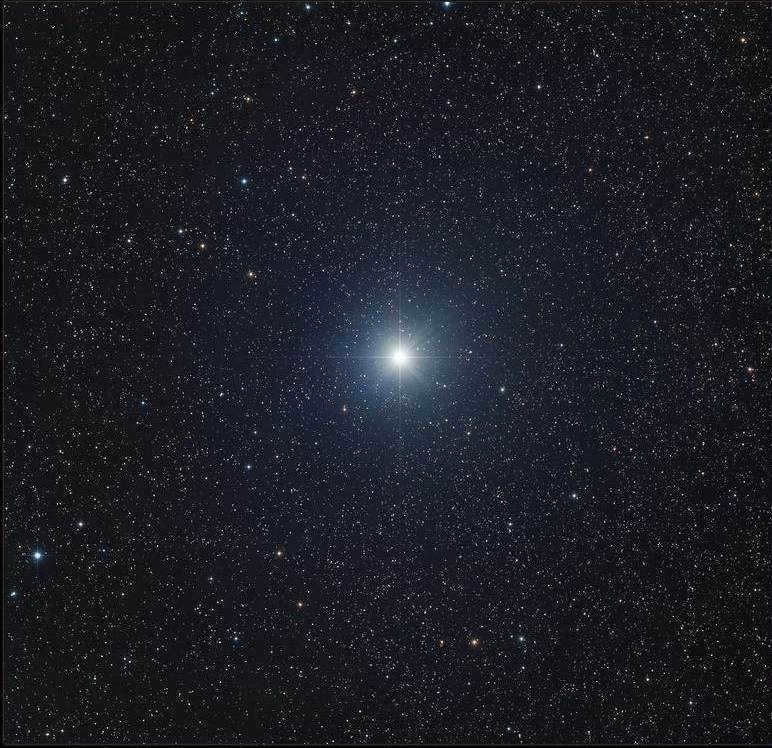
Arcturus: The Brightest Star in the Northern Hemisphere
Arcturus, the most prominent celestial body visible from the Northern Hemisphere, shines brightly in our night sky. Situated approximately 37 light-years away, this star takes the form of a red giant, possessing a luminosity 110 times greater than the Sun. Remarkably, Arcturus can even be observed during daylight hours. It was Jean-Baptiste Morin, a French astronomer, who first made this groundbreaking discovery in 1635. Throughout the year, Arcturus remains visible from every corner of Russia, a testament to its prominence.
Scientific investigations have revealed that the brightness of Arcturus undergoes slight variations every 8.3 days. This phenomenon is attributed to the star’s pulsating surface, a characteristic shared by numerous red giants. Furthermore, astronomers have successfully determined several parameters of Arcturus:
- The radius of the star is about 25.7 ± 0.3 times the radius of the Sun;
- The surface temperature of the star is around 4,300 K;
- The approximate mass of the star is 1.98892x1030kg.
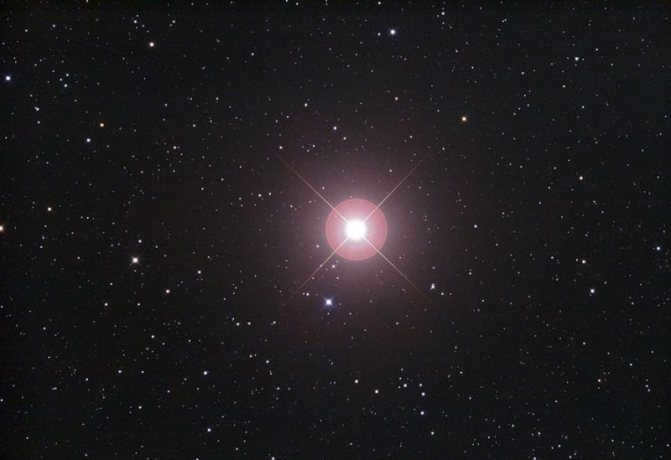
Additionally, you can find more information on the topic of alcohol burners, including their purpose, device, principle of operation, and technical data, in an article written by Dr. F.A. Bronin.

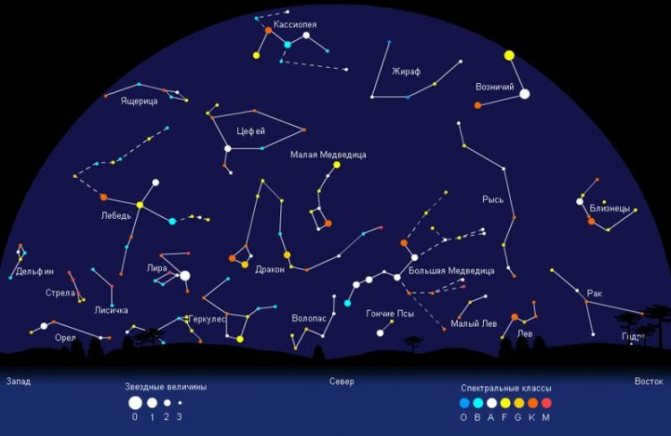
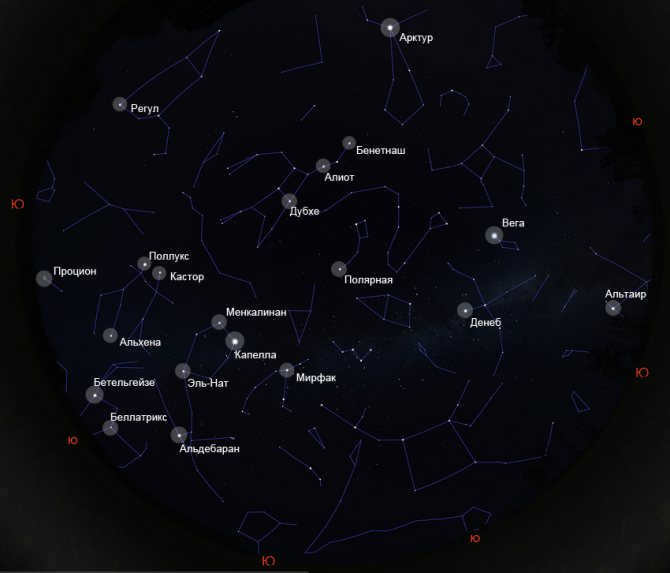
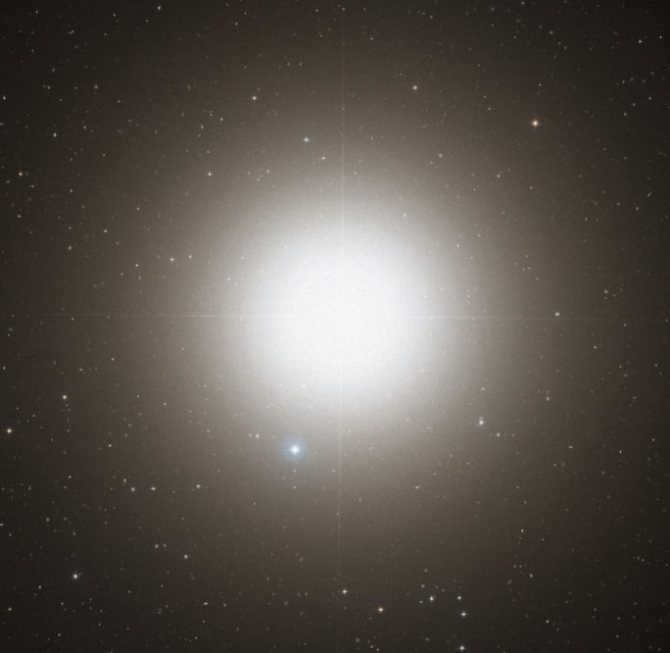
Vega, the second brightest star visible in the Northern Hemisphere, can be found in the constellation Lyra. It is located 24 light-years away from our Solar System. Astronomers have a great interest in Vega, as it serves as the basis for a scale used to measure the brightness of other stars. Additionally, Vega holds the distinction of being the second celestial body, after the Sun, to be photographed by scientists. This star is relatively young and has an ellipsoidal shape due to its rapid rotation, which reaches speeds of up to 274 km/s. Scientists have also discovered that Vega is surrounded by a dust disk that is heated by the star’s radiation.
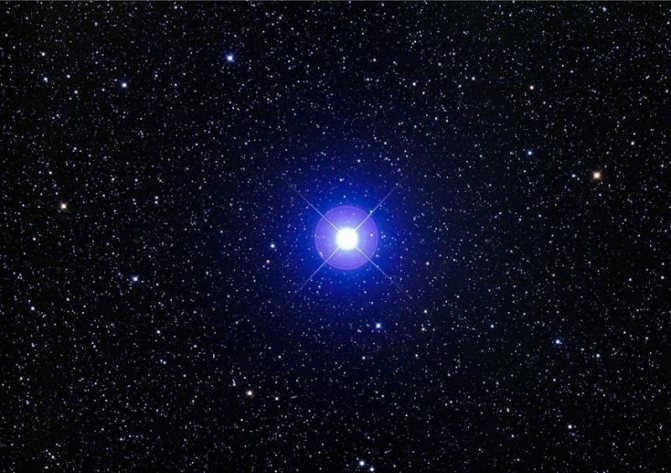
Polaris
Polaris is the most vibrant star visible in the Northern Hemisphere. With a luminosity nearly 78 times greater than the Sun, it captivates astronomers worldwide. This celestial wonder is actually a double star system, comprised of two G-class giants. These massive stars are separated by a staggering distance of 100 million kilometers. Collectively, their mass is five times that of the Sun. One of the stars is a red giant, while the other is currently experiencing a transitional phase known as the Hertzsprung gap. From our perspective on Earth, these two stars appear as a single, radiant entity. However, they are actually located 42.2 ± 05 light-years apart.
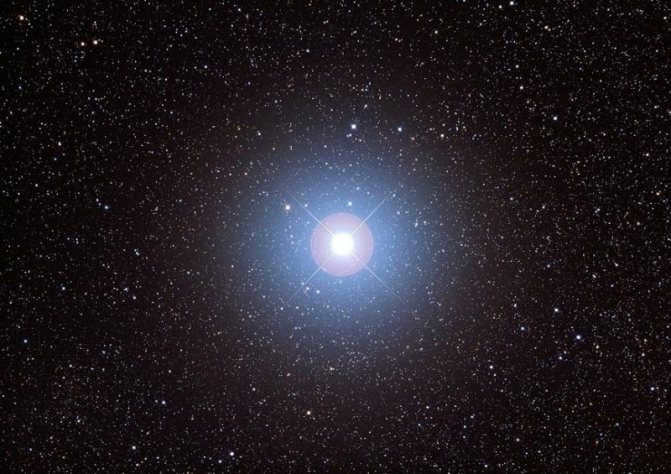
Beta Centauri
can be paraphrased as “The second brightest star in the constellation Centaurus”.
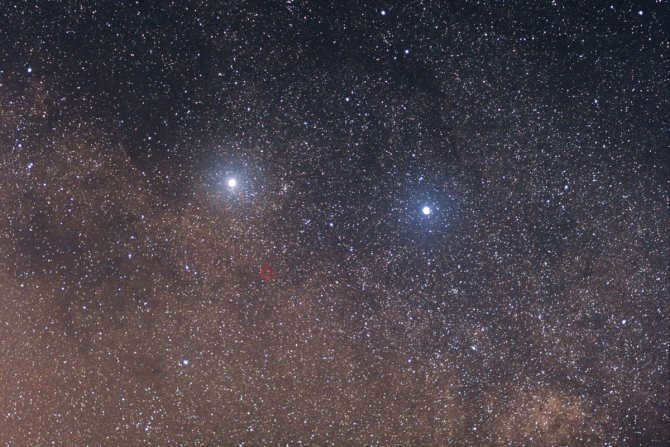
Earth Distance: 390 light-years. Visible magnitude: +0.61.
Hadar, also known as Beta Centauri, is the eleventh most luminous star in the nighttime sky. Hadar is essentially a triple star system, consisting of the stars Aa, Ab, and B. Both Aa and Ab have a mass at least ten times greater than that of the Sun.
With a combined visible magnitude of +0.61, Beta Centauri is the second most luminous star in the Centauri constellation, following our neighboring star Alpha Centauri.
Furthermore, Beta Centauri displays rapid fluctuations in its brightness and is therefore classified as a variable star of the Beta Cephei type. However, these fluctuations are small and cannot be observed with the naked eye.
Procyon
Procyon, situated in the Lesser Dog constellation, is among the most brilliant stars in the Northern Hemisphere. This star is slightly larger than our Sun and shines 7.5 times more intensely. Its proximity to Earth is relatively short, just 11.42 light-years away. Procyon is a binary system composed of a luminous main subgiant and a white dwarf, with a separation of 16 astronomical units between them. The optimal time to observe Procyon is during the winter season when it stands out as the most prominent object in its constellation.
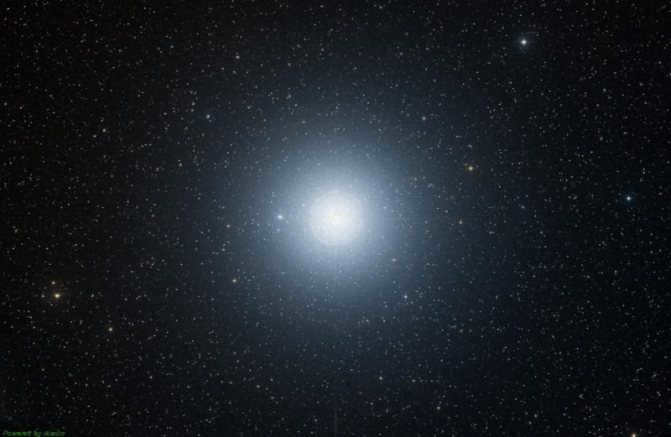
Brightest celestial body in the heavens
The celestial body that shines the brightest in the night sky is known as Sirius, which belongs to the constellation of Canis Major. Sirius has an apparent magnitude of -1.46m, making it highly visible to the naked eye. In terms of absolute magnitude, Sirius ranks at 1.4m.
Interestingly, Sirius is a binary star system, consisting of a faint white dwarf called Sirius B and a much brighter star named Sirius A. The mass of Sirius A is twice that of our Sun, while Sirius B is slightly lighter. Thanks to the remarkable capabilities of the Hubble telescope, we have stunning images of Sirius, where the dominant star, Sirius A, is clearly visible, and the smaller white dot to its lower left represents Sirius B.
Given its status as the brightest celestial body, Sirius holds a significant position in the minds of many individuals when considering the structure and arrangement of the night sky.
How can we locate Sirius? Locating Sirius can be done quite easily. The most opportune time to do so would be during the winter season, as Sirius cannot be seen during the summer. Initially, we must locate the constellation Orion, which is recognized by its well-known “Orion belt” consisting of three stars. Once we have identified Orion, we need to face this constellation and direct our attention to the brightest star situated below and to the left of it. To aid in this quest, a map will prove invaluable:
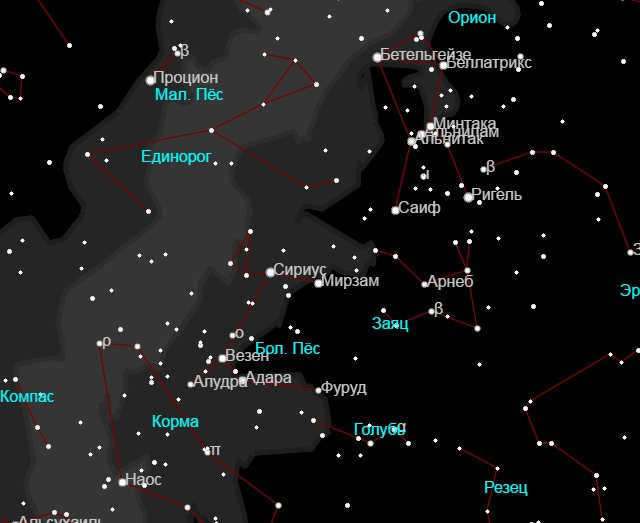
Sirius
Sirius holds the title of the brightest star in the sky. However, Betelgeuse is not far behind. Betelgeuse, a red giant situated in the Orion constellation, takes the fifth spot on the list of brightest stars. It is a massive star, with a mass approximately 17 times that of the Sun. In terms of size, Betelgeuse surpasses our Sun’s diameter by almost 1000 times. Additionally, Betelgeuse shines with a brightness that is 80 thousand times greater than the luminosity of the Sun. This star is located about 640 light years away from the solar system. One interesting observation made by astronomers is that over a span of 16 years, Betelgeuse’s diameter has decreased by 15%. As of now, scientists have not been able to provide an explanation for this phenomenon.
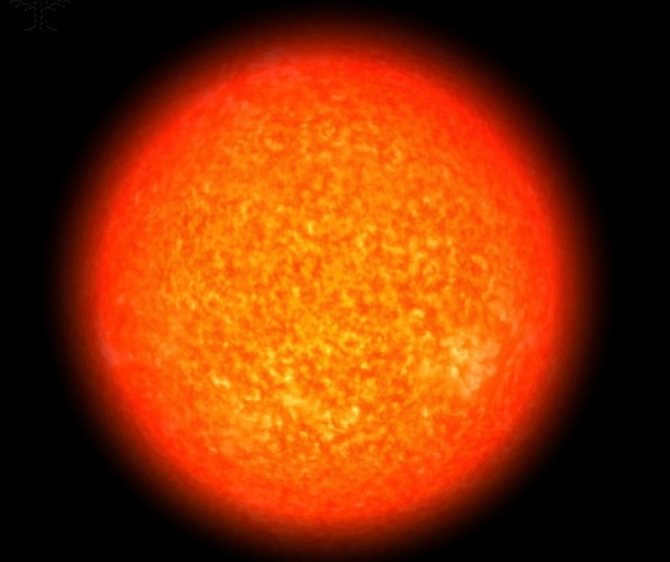
Rigel
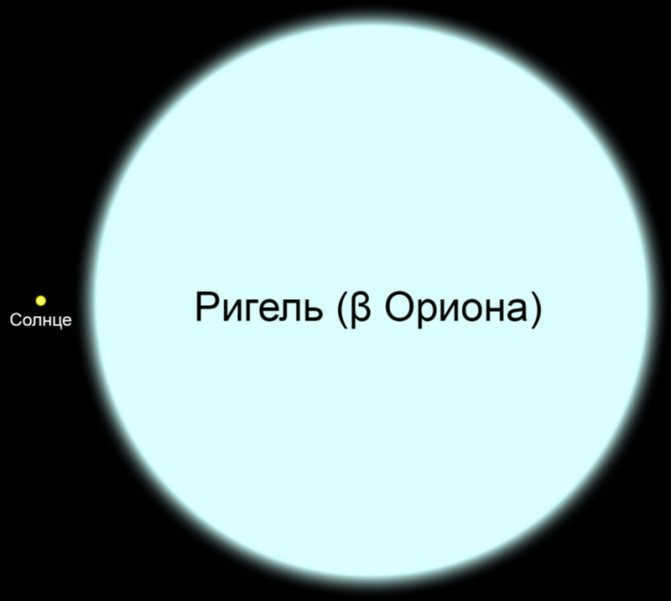
Rigel
Photo: Comparative sizes of the Sun and Rigel Source: wikimedia.org
Rigel is a supergiant star that shines in a dazzling blue-white color. It is the brightest star in the Orion constellation and the 7th brightest star in the entire sky. Scientists believe that Rigel, due to its immense size and brightness, will eventually explode as a supernova. According to the Encyclopedia Britannica, Rigel is located approximately 870 light years away from our Sun. Various reports suggest that Rigel’s luminosity is anywhere between 47,000 and 130,000 times brighter than our own Sun, with a diameter that is only 74 times larger. This makes Rigel one of the most powerful stars in our Milky Way galaxy.
If Rigel were positioned at the same distance as Sirius, it would appear slightly less bright than the full Moon.
Despite being frequently referred to as the brightest star within a 1,000 light-year radius of Earth, the luminosity of Rigel remains uncertain. Based on the currently accepted distance of 860-870 light-years, its estimated brightness is approximately 120,000 times that of the Sun. However, a recent study presents slightly different data – 1170 +-130 light-years, which is ultimately equivalent to the luminosity of 218,000 suns.
The Rigel system is comprised of three stars! There is also a hypothesis regarding the presence of a fourth star within this system. Only the main Rigel star is visible to the naked eye in the Earth’s sky, while a powerful telescope would be necessary to observe the other two.
Altair
Easily visible from the Northern Hemisphere, Altair is a star that is included in the list of stars that are closest to Earth. It is located at a distance of 16.8 light years. Altair is classified as a white hot star and has a mass that is 1.8 times that of our own star. One unique characteristic of Altair is its flattened shape, which is a result of its incredibly fast rotation. Altair completes a full revolution around its axis in just 8.9 hours, with an equatorial velocity of 286 km/s. Known as the brightest star in a group called the Eagle Family, Altair stands out in the night sky.
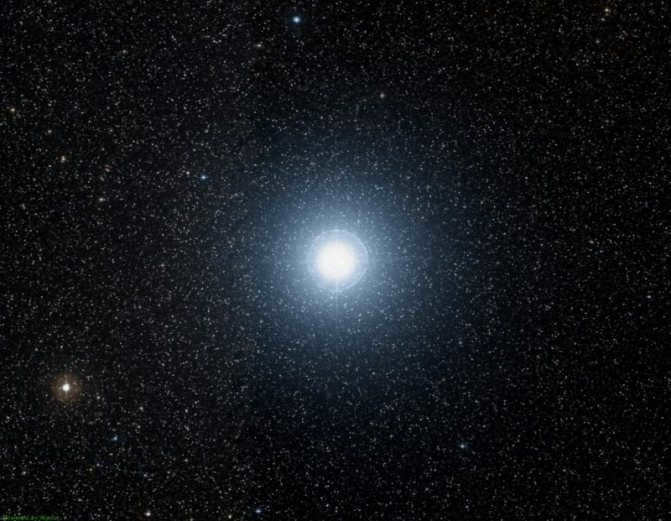

Betelgeuse
People living in the North can witness the brilliant radiance of another star, known as Betelgeuse. It is easily visible in the constellation of Orion due to its exceptionally bright luminosity. Betelgeuse is often referred to as the Shoulder of Orion, owing to its position at the shoulder of the celestial figure. Betelgeuse is a typical red giant, emitting a fiery orange hue. In terms of size, this star is 18 times larger than our Sun, and shines 150 times brighter. Betelgeuse is located at a distance of 65.1 light years from Earth.
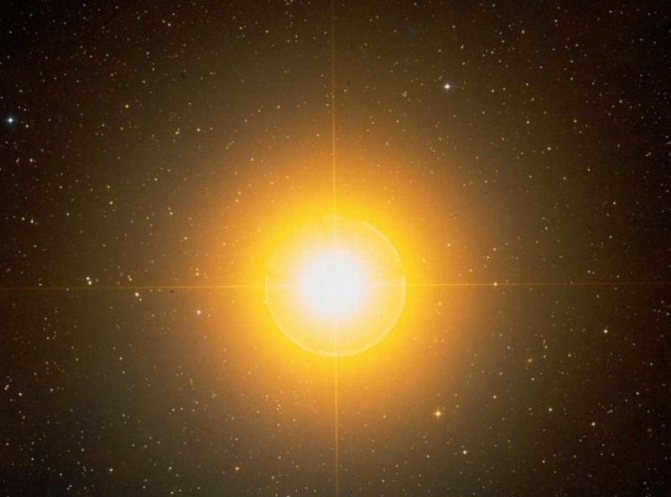
Pollux
Pollux, an orange giant, holds the eighth position among the brightest stars in the Northern Hemisphere. Currently, it is in the stage of evolving into a red giant. Researchers predict that this transformation will take place in the next 100 million years. Situated in the constellation Gemini, Pollux shines as the most luminous star within the constellation. Its distance from Earth is approximately 33.7 light-years.
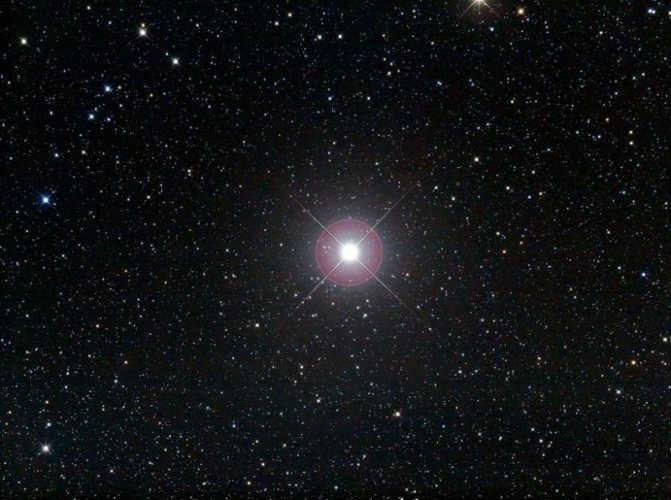
Ahernar
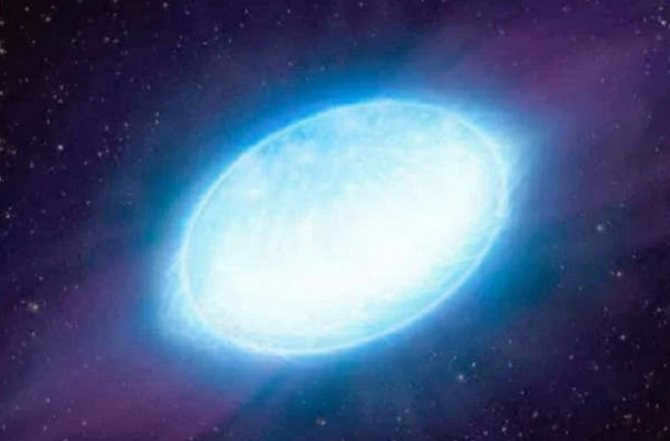
Distance from Earth: 139 light years. Visible magnitude: +0,46.
The binary star system Ahernar, also known as Alpha Eridanus, is situated in the constellation Eridanus. Consisting of two components, Alpha Eridana A and B, Ahernar is distinguished by its brightness. Eridana A, the brighter of the two, is classified as a B-type main-sequence star, which is among the most luminous star types in existence.
With a brightness approximately 3150 times greater than the Sun and a mass seven times larger, Ahernar is most effectively observed in the southern hemisphere at a latitude of 33 degrees south. It becomes invisible above 33 degrees north latitude.
Deneb
Deneb, one of the most brilliant stars observable in the Northern Hemisphere, can be observed when gazing at the Swan constellation. The precise distance from Earth to this star has not yet been ascertained by scientists due to its immense distance, making it incredibly challenging to calculate this gap accurately. However, astronomers are certain that Deneb is an exceptionally radiant celestial body. Numerous stars situated at the same distance from our planet are not visible even through a telescope.
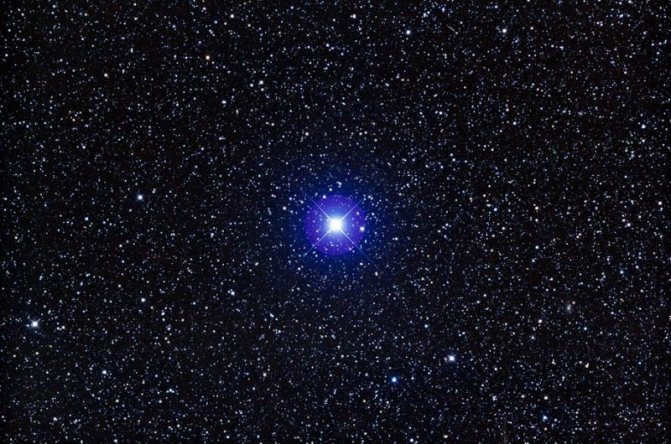
The Brightest Star in the Northern Hemisphere
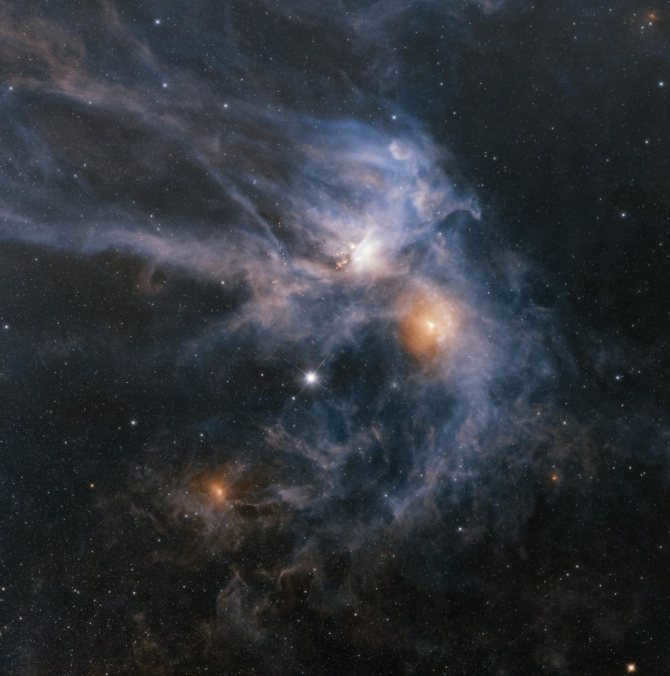
This image presents Antares in bright white using false-color infrared.
Distance from Earth: 550 light years. Visible magnitude: 0.6-1.6. Current stage of evolution: Red supergiant.
Antares, also referred to as Alpha Scorpius, is the most luminous star in the Scorpius constellation. The apparent magnitude of Antares ranges from +0.6 to +1.6, which is typical for a slow, irregular variable star. It is one of the largest and brightest stars visible to the naked eye in the night sky.
In spite of its single-star appearance, Antares is composed of two stars, Antares and Antares B, potentially forming a binary system. The second, much smaller star, Antares B, is a blue main-sequence star.
Based on the latest estimates, Antares has a mass ranging from 11 to 14.3 times that of the Sun and a radius equivalent to 680 times that of the Sun. If Antares were placed at the center of our solar system instead of the Sun, it would likely engulf the orbit of Jupiter.
Regulus
Regulus, the final star on the list of the brightest stars, can be observed in the constellation Leo during nighttime. This young star has a mass 3.5 times that of the Sun and rotates at a very fast rate, resulting in a flattened shape. It completes one full rotation in just 15.9 hours. The brightness of its poles exceeds that of its equatorial region. Regulus is located approximately 77.5 light years away from Earth.
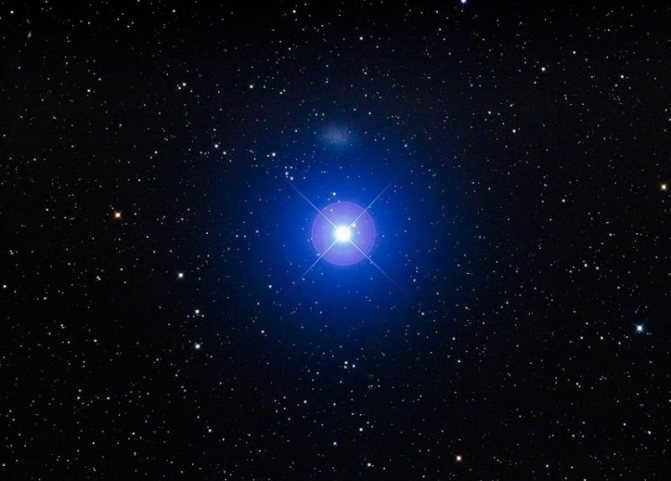
Canopus
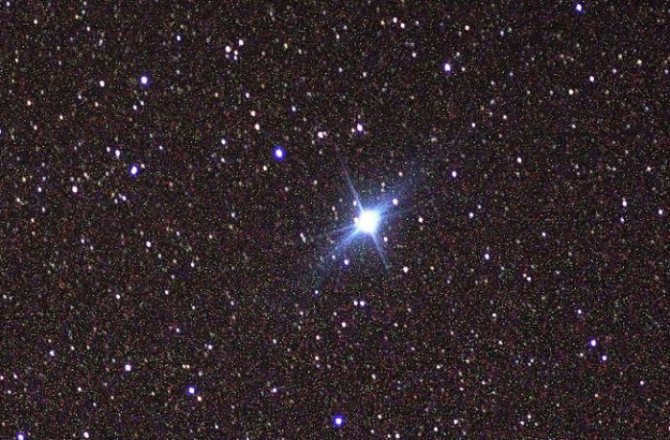
An incredible picture of Canopus captured by the International Space Station
Distance from Earth: 310 light-years. Apparent magnitude: -0.74.
Canopus, also referred to as Alpha Carinae, stands out as the most brilliant star in the Carina constellation and the second brightest in the night sky. Under typical circumstances, this luminous A-type giant star is observable year-round in the southern hemisphere, particularly during the summer season.
Canopus is believed to possess a luminosity that is 10,700 times greater than that of the Sun, while having a mass approximately eight times larger. Prior to the launch of the Hipparcos satellite in 1989, the estimated distance between the Sun and Canopus ranged from 90 to 1,200 light-years.
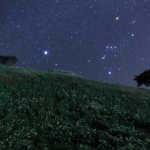

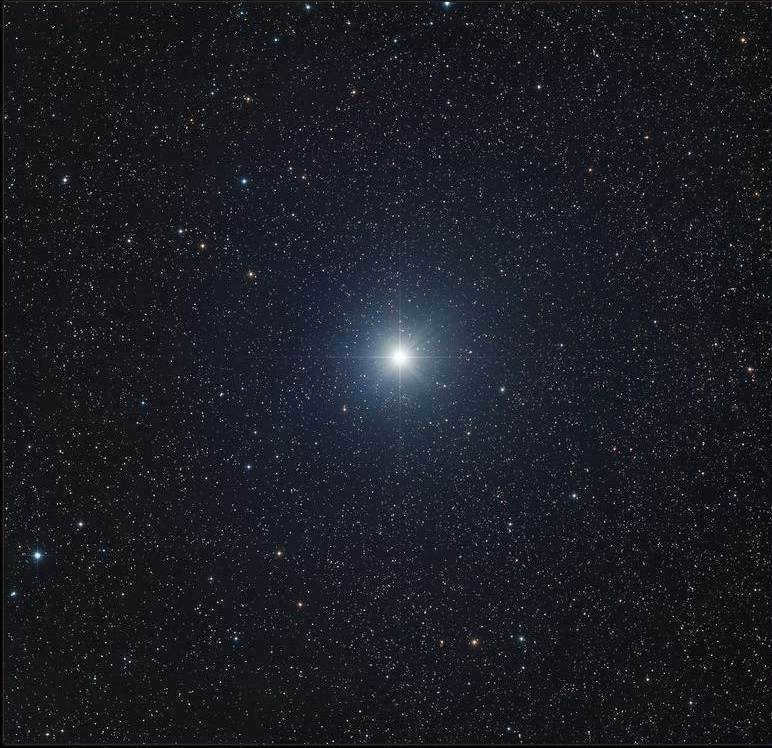
During a clear night, the starry sky is adorned with shimmering stars, appearing to be infinite in number. However, scientists have determined that the naked human eye can only perceive around 6 thousand stars without the aid of telescopes. Furthermore, not all of these stars are visible from both the northern and southern hemispheres. Certain celestial lights remain permanently obscured by the horizon. Nevertheless, the night sky remains captivating, with certain stars captivating observers with their brilliant glow.
Arcturus: The Brightest Star in the North Hemisphere
Arcturus, the most brilliant star observable from the Northern Hemisphere on our planet, shines with unparalleled radiance. This celestial body is located approximately 37 light-years away. Arcturus, a red giant, possesses a luminosity 110 times greater than that of the Sun, making it visible even during daylight hours. The first scientist to make this remarkable discovery was the French astronomer, Jean-Baptiste Morin, who observed the star during daytime in 1635. Arcturus can be observed from any location within Russia throughout the year.
Scientists have determined that the star’s brightness undergoes slight variations every 8.3 days. These changes in luminosity are attributed to the pulsations of the star’s surface, a common characteristic of many red giants. Additionally, astronomers have successfully determined several parameters of Arcturus:
- The star’s radius is about 25.7 ± 0.3 times the radius of the Sun;
- It has a surface temperature of around 4300 K;
- The estimated mass of the star is approximately 1.98892x1030kg.
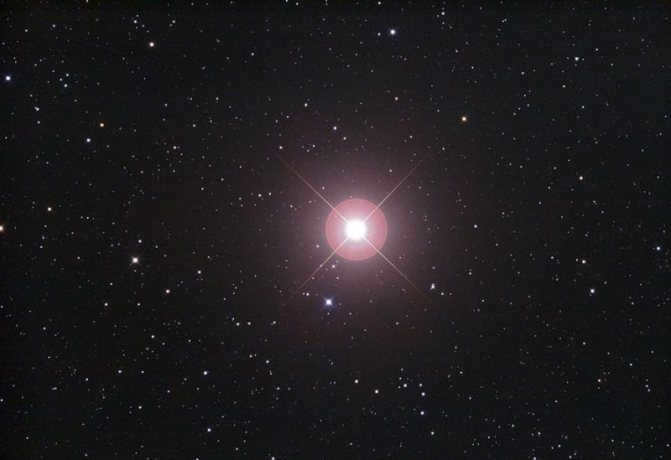
Ahernar (α Eridanus).
Ahernar, which means “the conclusion of the river” in Arabic, holds a significant place in the constellation Eridanus, named after the famous river in Greek mythology.
Ahernar secures its position as the hottest star in our Top 10 list, boasting temperatures that range from 13 to 19 thousand degrees Celsius.
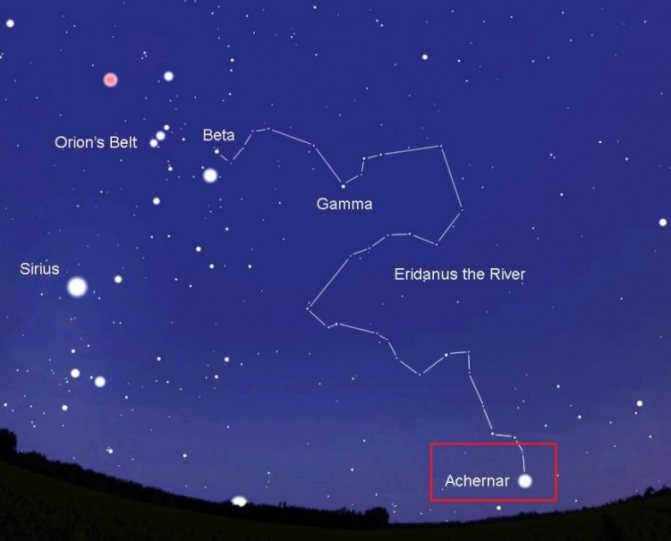
A vibrant azure star possessing a mass seven times that of the Sun and a luminosity 3,000 times greater. It is recognized as one of the most rapidly rotating stars within our knowledge! Its rotation is so swift that its equatorial radius exceeds its polar radius by 56%, and the temperature at the pole, due to its proximity to the core, is elevated by 10,000 K. Nevertheless, this celestial entity is located at a considerable distance from us, specifically, 139 light-years away.
Encircling Ahernar, one may discern a radiant shell composed of the star’s material – a blend of plasma and incandescent gas. Additionally, the orbit of Alpha Eridanus is highly unconventional. By the way, Ahernar is a binary star system.
This particular star is only visible in the Southern Hemisphere. Unfortunately, it cannot be seen in the territory of Russia. In order to comfortably observe Ahernar, one needs to be located south of the 25th degree of Northern latitude. To locate Ahernar, simply mentally draw a straight line in a southerly direction through the stars Betelgeuse and Rigel. The first exceptionally bright star you encounter will be Ahernar.
Vega.
Vega, located in the constellation Lyra, is the second brightest star visible in the Northern Hemisphere. It is also of great interest to astronauts. Not only was Vega used as the basis for creating a scale to determine star brightness, but it was also the second celestial luminary after the Sun to be successfully photographed. Vega is a relatively young star with an ellipsoidal shape due to its incredibly fast rotation speed of 274 km/s. Scientists have also discovered that Vega is surrounded by a heated dust disk, influenced by the star’s radiation. With a distance of 24 light-years from the solar system, Vega continues to captivate scientists and astronomers alike.
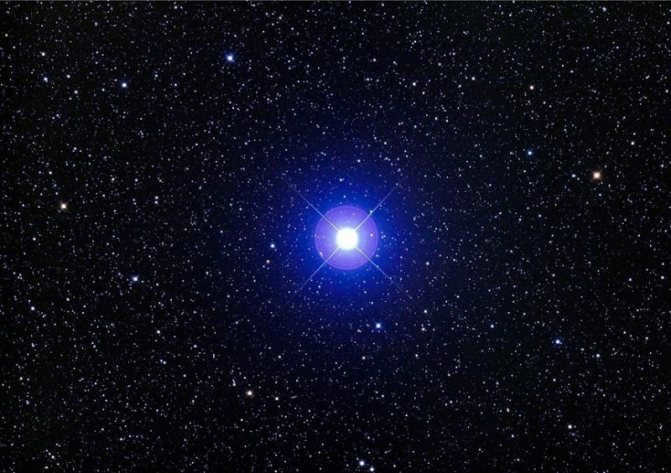
Where can I locate Polaris?
To find the figure of the Big Bucket, which is well-known even to those who are not familiar with astronomy, it is necessary to locate seven stars of the Big Dipper that are almost identical in brightness. The wide part of the Big Bucket, opposite to the “tail,” is made up of two stars – Merak below and the brighter Dubhe above. By drawing a straight line between these two stars, starting from the less bright Merak towards the brighter Dubhe, you can locate the tip of the “tail” of the Little Bear and Polaris. Polaris is the brightest star in the area, making it easy to identify. These stars are visible all night in most places in the Northern Hemisphere of the Earth, as they do not go below the horizon. However, they can be difficult to distinguish when they are located low above the horizon in the evenings due to the absorption of light.
Polaris stands out because it is the closest star to the north pole of the world that can be seen with the naked eye. What makes it even more unique is that it remains in virtually the same position at all times, regardless of the day or time of year. The Big Dipper and Little Dipper, along with other constellations, revolve around Polaris in the sky. Interestingly, the Bucket of the Little Dipper can appear both inverted and standing “on the edge”. This special position of Polaris is exclusive to the Earth’s sky. In the skies of other planets, different stars take on the role of Polaris due to the varying tilt of their rotation axes in relation to the planes of their orbits. The immobility of Polaris has made it a reliable point of reference for sailors, shepherds, and travelers for over a thousand years.
Polaris: The Brightest Star in the Little Bear Constellation
There is a common misconception that Polaris is an extremely bright star. Many individuals who are not well-versed in astronomy mistakenly believe that Polaris is not only bright, but possibly even the brightest star in the night sky.
However, Polaris is only the brightest star within the Little Bear constellation. With an apparent magnitude of +1.97, Polaris is considered a second magnitude star, of which there are numerous examples in the sky. It is worth noting that Polaris holds significance for navigation in the Northern Hemisphere due to its unique position. Situated near the North Pole, this star serves as a useful guide for determining direction.
Guidance using the North Star
If you happen to find yourself in the midst of the wilderness during nighttime, with an unsuitable sleeping spot and without a compass (either because you left it at home or it got broken), this is where the skill of navigating by the stars becomes incredibly useful. The direction towards Polaris aligns with the direction towards the north, and its height above the horizon corresponds to the latitude of the observer. In the night sky of the northern hemisphere, the most significant celestial landmark is Polaris. It remains stationary in the polar region of the sky, serving as a reliable indicator of the north. This characteristic makes it invaluable for those who wish to orient themselves in unfamiliar terrain. Therefore, by learning to identify Polaris and the constellations of the Little and Big Dipper, we can establish the location of the north. Now, how do we determine the other cardinal directions? Well, that’s quite simple. By facing north, we can discern south behind us, east to our right, and west to our left.
Another noteworthy and fascinating aspect of Polaris is its altitude above the horizon. Due to its proximity to the Earth’s pole, our celestial heroine remains practically stationary from this perspective. However, its height above the horizon can vary depending on your location. For instance, if you happen to be precisely at the North Pole, you would observe Polaris almost directly above you at the zenith. On the other hand, if you find yourself at the equator (which is essentially the “side” of our planet), Polaris would appear almost exactly on the horizon. Thus, its altitude above the horizon aids in determining the latitude of your position. In the past, navigators would measure the angle between Polaris and the horizon every night as they sailed towards the north, in order to ascertain how far north or south they had traveled.
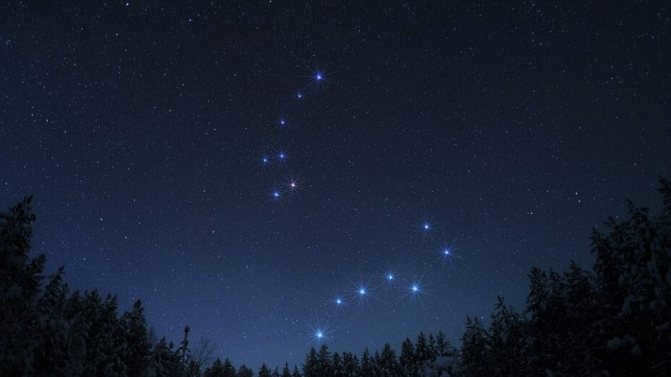
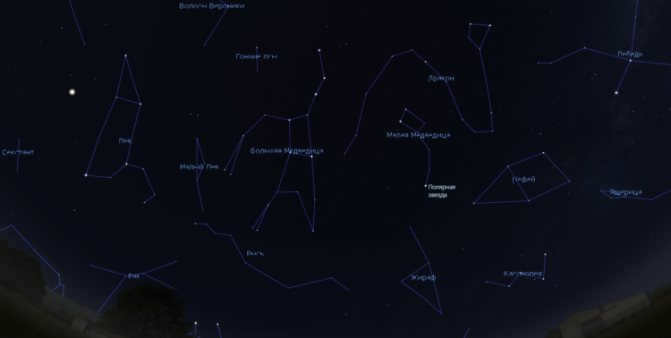
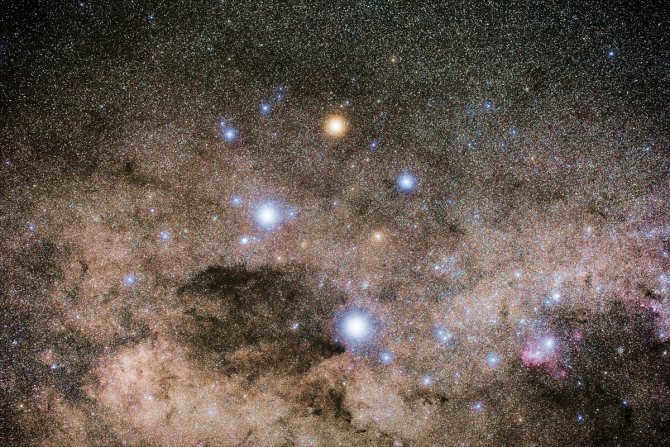

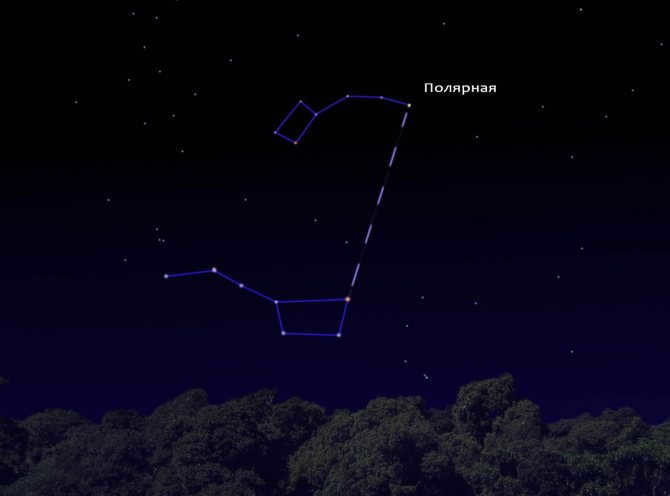
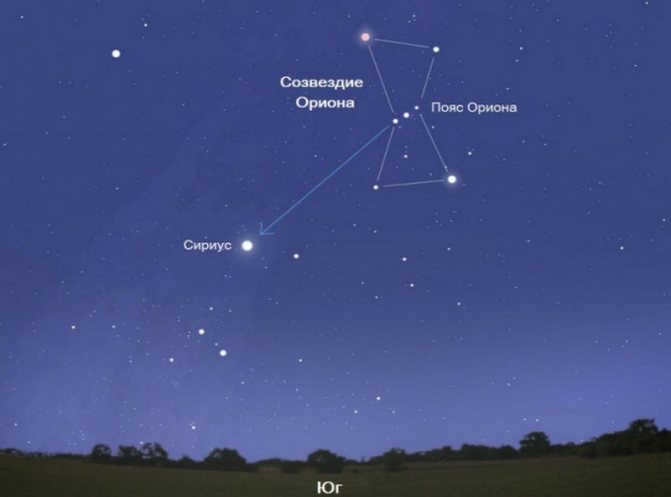
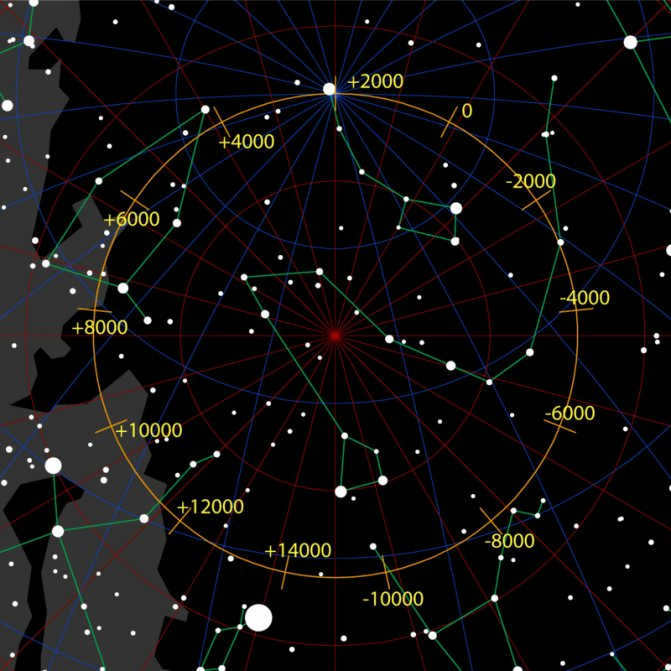
Capella, the third most luminous star visible from the Northern Hemisphere, shines with a brightness nearly 78 times that of our Sun. Astronomers diligently study this double star system, comprised of two G-class giants, which are separated by a staggering distance of 100 million kilometers. Collectively, these stars possess a mass five times greater than that of the Sun. One of the stars is a red giant, while the other is in the transitional stage of evolution known as the Hertzsprung gap. Despite their close proximity, these two stars, which appear as a single radiant point from Earth, are actually 42.2 ± 05, sv years apart.
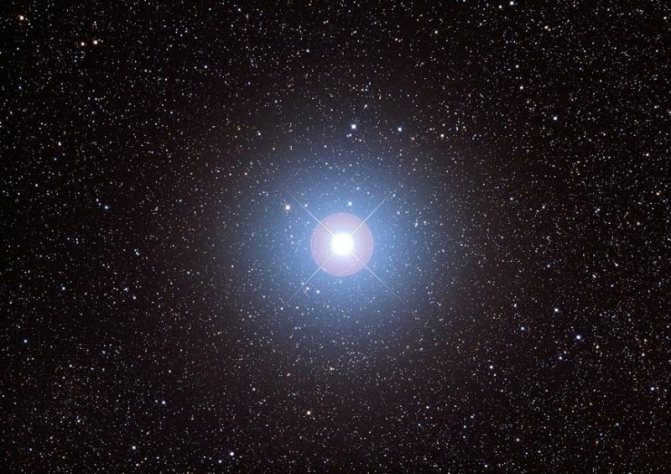
Procyon
Procyon, located in the constellation of the Lesser Dog, is one of the most brilliant stars in the Northern Hemisphere. This star is slightly larger than the Sun and shines 7.5 times brighter. It resides at a relatively close distance from our planet, approximately 11.42 light years away. Procyon is a binary system, consisting of a luminous main subgiant and a white dwarf. These celestial bodies are separated by a distance of 16 astronomical units. The optimal time for observing Procyon is during the winter season, when it stands out as the most radiant object in the entire constellation.
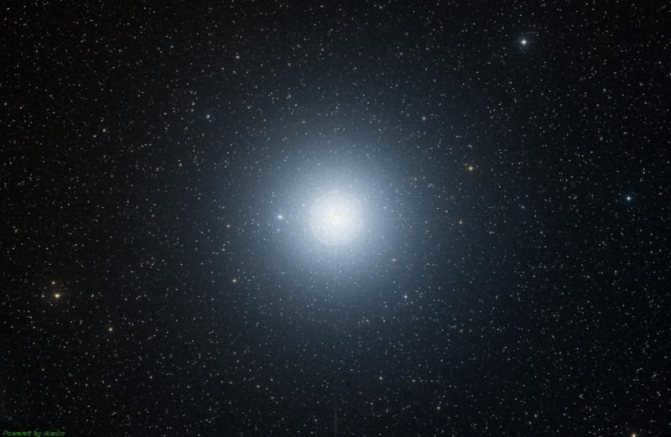
Alpha Centauri A
can be restated as
Alpha Centauri A Star
or
The Star Alpha Centauri A
.
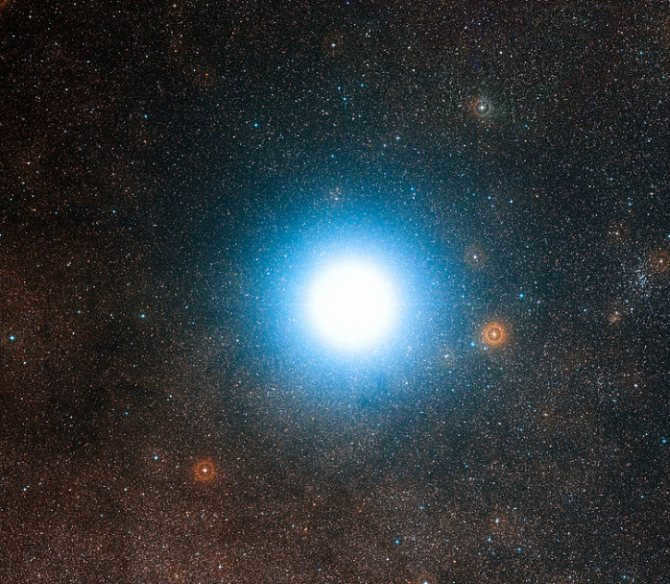
An image of Alpha Centauri A taken by DSS2
Distance from Earth: 4.37 light-years. Visible magnitude: -0.27.
Alpha Centauri is a binary star system comprising of two close double stars, Alpha Centauri A and Alpha Centauri B, and the relatively distant Alpha Centauri C or Proxima Centauri. Despite being the closest star to our solar system, Proxima Centauri is much dimmer than Alpha Centauri AB.
The estimated distance between Proxima Centauri and Alpha Centauri AB is approximately 0.21 light-years (towards our solar system).
The most prominent star among the three, Alpha Centauri A, also known as Rigil Centaurus, is slightly more massive and 1.519 times brighter than the Sun. However, its double companion is slightly less massive and twice as bright as a star in our solar system.
Betelgeuse
Betelgeuse holds the fifth position on the list of the most brilliant stars. It is classified as a red giant and can be found in the Orion constellation. Betelgeuse’s mass is approximately 17 times greater than that of the Sun, while its size is almost 1000 times larger in diameter. Furthermore, the brightness of this star surpasses the luminosity of the Sun by 80 thousand times. It is situated about 640 light years away from our solar system. Over the course of 16 years, astronomers have observed a 15% decrease in Betelgeuse’s diameter, but the exact explanation for this phenomenon remains unknown.
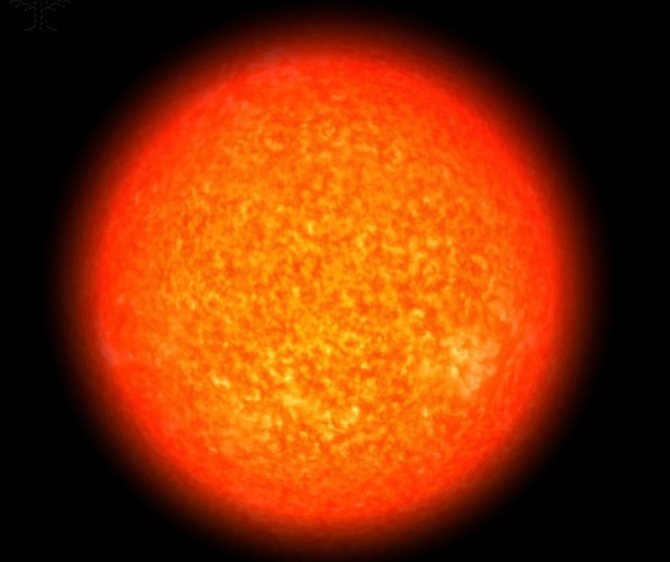
Which star shines the brightest in the night sky and where can it be found
However, when it comes to the star that emits the most light from our perspective on Earth, that honor belongs to Sirius. This incredibly bright star has an apparent magnitude of -1.46 and an absolute magnitude of 1.4.
Interestingly, Sirius is actually a binary star system, consisting of a white dwarf (B) and a larger component (A). In fact, Sirius A is more massive than our very own Sun.
Since Sirius is located in the constellation Canis Major (its Alpha star), that is where you should direct your gaze. It is commonly believed that the optimal time to observe Sirius is during the winter months.
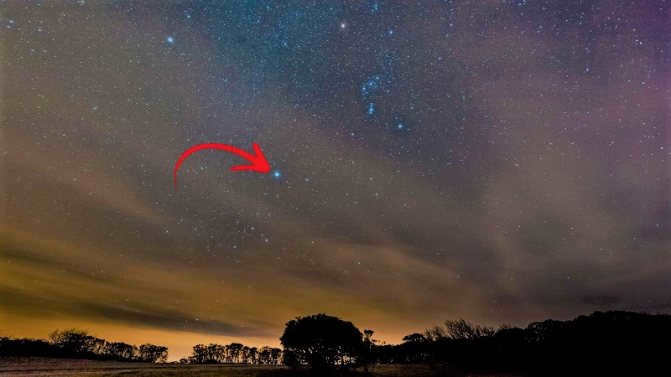
The brightest star in the Northern Hemisphere is Sirius. It can be easily seen from this part of the world. Another star that stands out is Altair. Altair is one of the closest stars to Earth, with a distance of 16.8 light years. It is a white hot star and its mass is 1.8 times that of our own star. Altair has a unique shape, as it is flattened due to its fast rotation. It takes Altair only 8.9 hours to complete a full revolution around its axis, with an equatorial speed of 286 km/sec. This star is the brightest in the Eagle Family constellation.
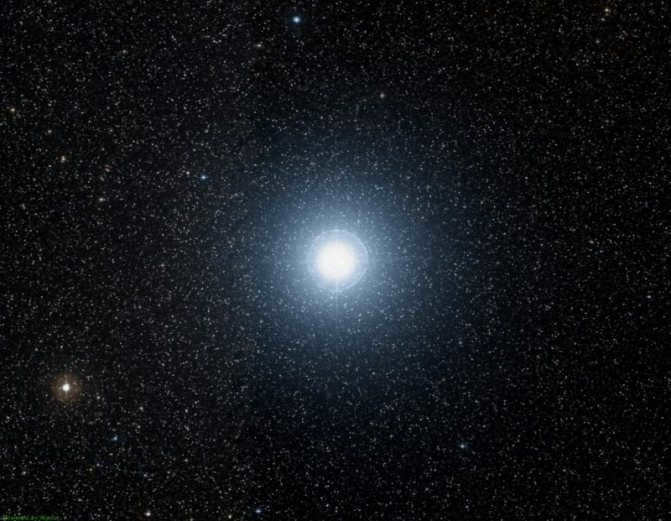
Aldebaran
In the Northern Hemisphere, people have the opportunity to observe the brilliant radiance of a star known as Aldebaran. This celestial body stands out in the Taurus constellation due to its exceptionally luminous appearance. Aldebaran is often referred to as the Eye of Taurus, as it is situated at the head of the starry figure. Emitting an orange glow, Aldebaran is a typical giant star. In terms of size, it is 18 times larger than the Sun and shines 150 times brighter. Located 65.1 light years away from Earth, Aldebaran continues to captivate astronomers and stargazers alike.
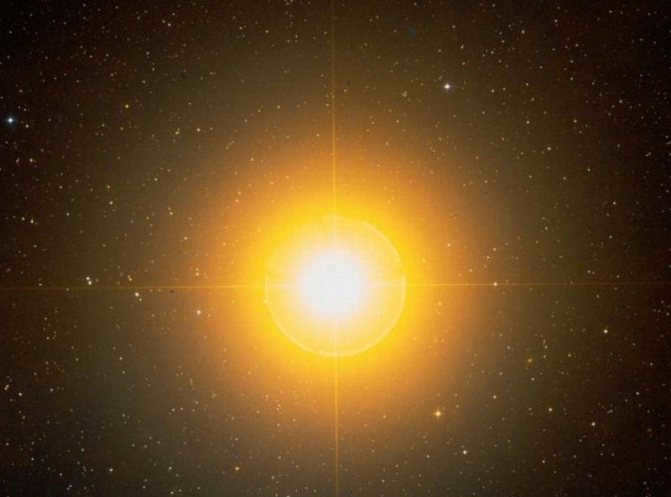
Aldebaran
Pollux, an orange giant, ranks eighth among the brightest stars in the Northern Hemisphere. It is currently in the phase of evolving into a red giant. Scientists predict that in 100 million years, Pollux will exhaust its helium reserves and transform into a white dwarf, shedding its gas envelope. This star is located in the constellation Gemini and is the most luminous within it. The distance between Earth and Pollux is approximately 33.7 light-years.
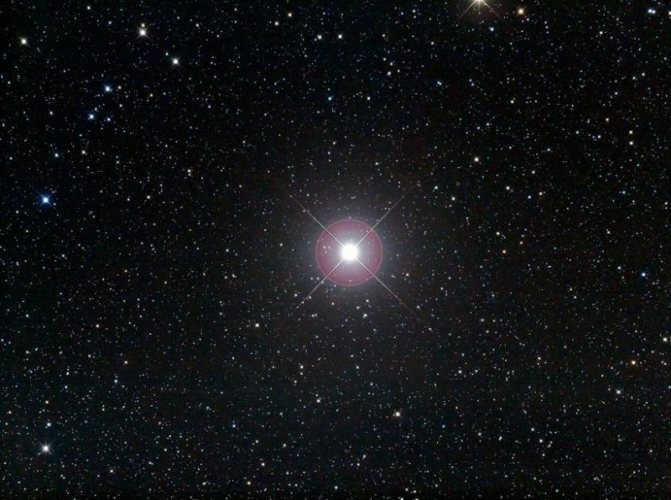
Deneb
Deneb, which is located in the constellation of Swan, is one of the most brilliant stars observable in the Northern Hemisphere. Due to its immense distance from Earth, scientists have encountered great challenges in accurately measuring the gap between our planet and this celestial body. Nevertheless, astronomers are confident that Deneb is an exceptionally radiant entity. It is worth noting that numerous stars situated at the same distance as Deneb remain invisible even when observed through a telescope.
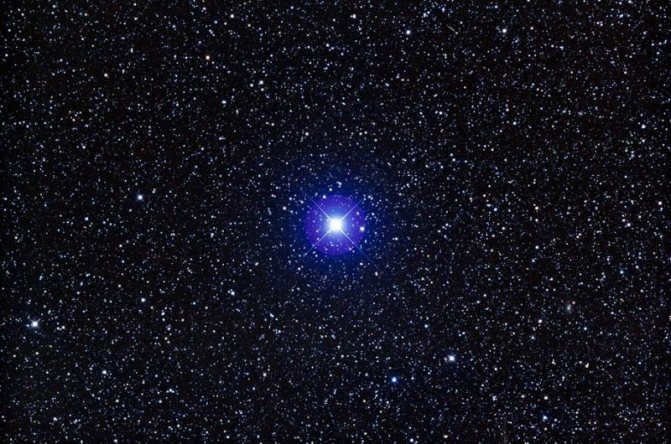

Canopus (α Kiel)
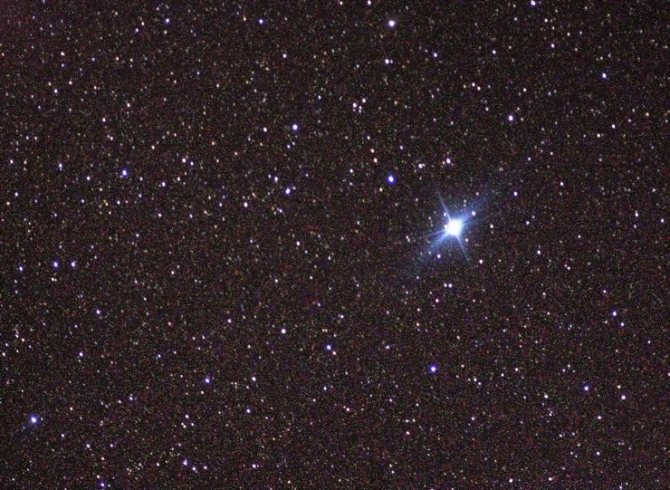
Canopus, also known as Alpha Kiel, is the second most luminous star in the night sky. It can only be seen from the Southern Hemisphere. This massive yellowish-white supergiant is located approximately 320 light-years away from Earth. In terms of luminosity, Canopus surpasses the Sun by an astounding 14,000 times!
Interestingly, Canopus holds the title for being the brightest star in the Southern Hemisphere.
If we were to imagine a sphere with a radius of 700 light-years centered around the Sun, Canopus would stand out as the brightest star within this vast expanse. However, due to its great distance from Earth, astronomers classify Alpha Kiel as the second brightest star.

